










By Ashley Villing ’25
On Feb. 13, the African American Literature class was offered to Riordan students through the course selection sheets.
World literature and U.S. history teacher Bob Harrington proposed this class to Vice Principal of Academics Nate Simon ’99, and will be in charge of teaching it— on the condition that enough students sign up.
If implemented, the class will start in August of the new school year. The intention supporting this change was to supplement the lack of African American presence in the school’s English curriculum.
Harrington said, “I think there is a missing component to the story that a lot of Americans get about the United States— both in history and literature classes. So, these authors would kinda fill in these missing pieces in the story of the nation.”
In terms of workload and structure, this class is similar to its alternative, American literature, which is typically offered to juniors. The main aspect differentiating it from others is the authors.

Harrington continued, “It is a way of looking at fiction in literature in order to help us understand history and ourselves too. Because whenever we engage with literature I think we learn about ourselves.”
Whether fact or fiction, literature is the backbone of communication and advancement. The voices behind those words are representative of many generations.
Malani Bluford ’25 stated, “It is important that we recognize that Black history is American history. This class is a chance to learn what message they tried to leave behind.”
This seems to be a growing sentiment amongst students across Riordan— which indicates positive results regarding the inception of the class. Many commented on the significance of connecting the past to the future.
Brianna Laval ’25, who is the
The curriculum itself is based on history but all works are fiction.
“
I think there is a missing component to the story that a lot of Americans get about the United States— both in history and literature classes.
-
Bob Harrington
co-president and communications head of Riordan’s Black Student Union, stated, “I feel that with the current events regarding this

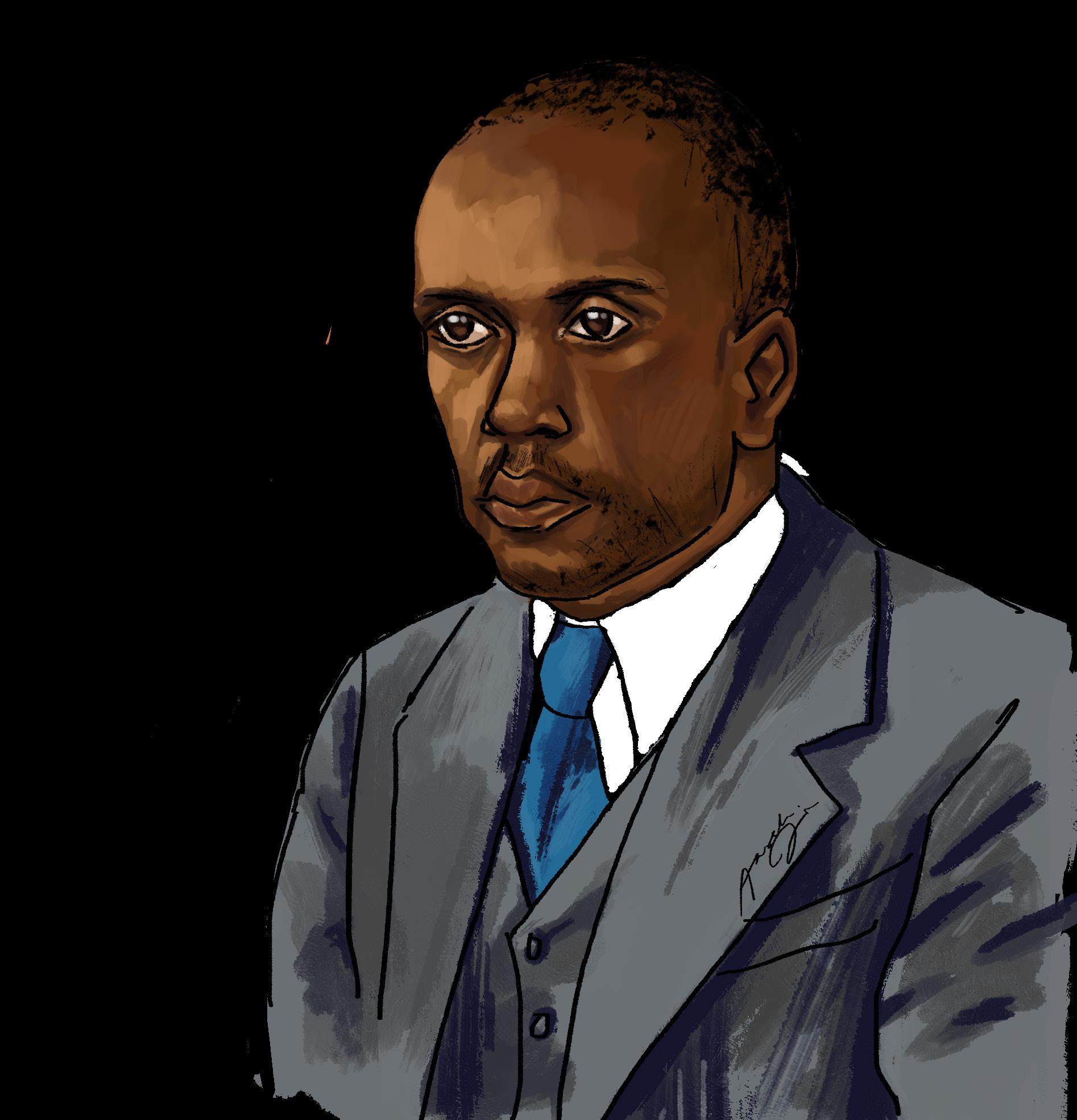
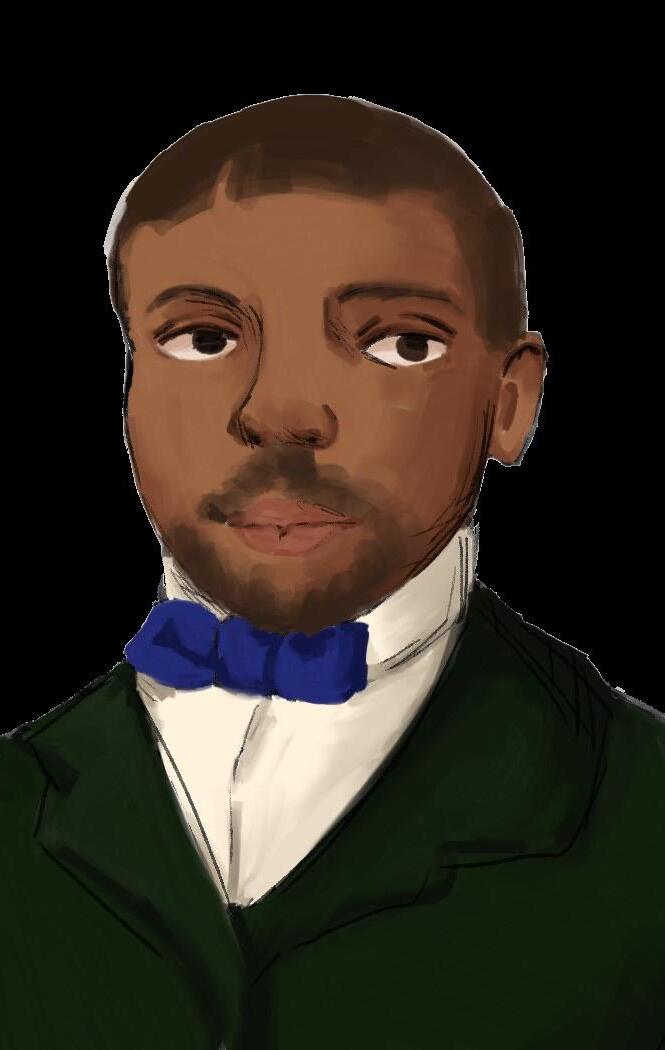
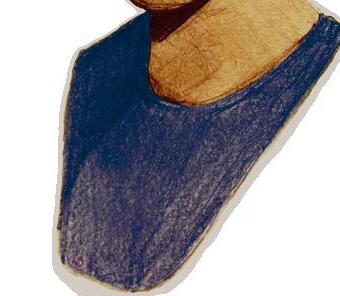
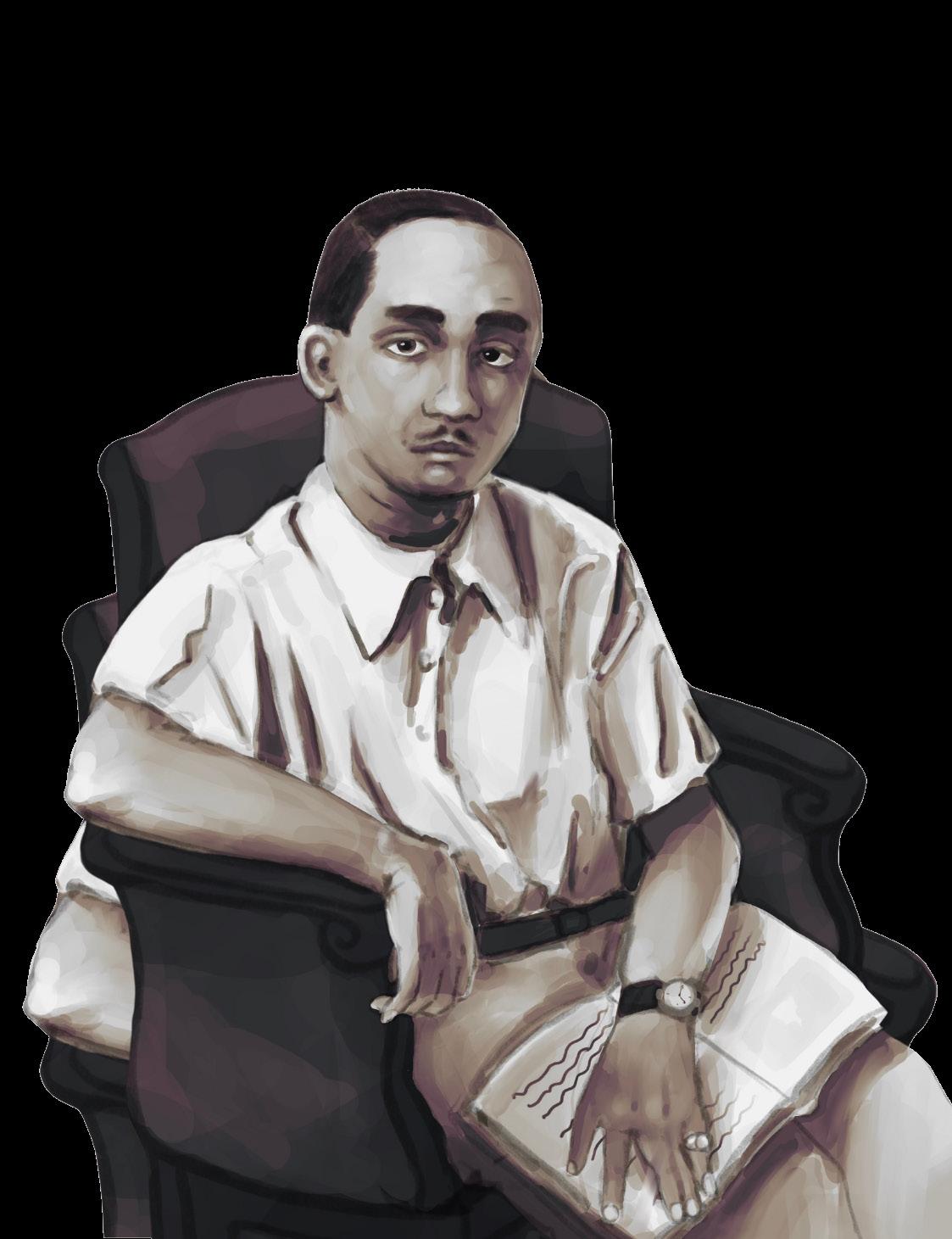


By E’Moni Ferdinand
’26
February. The shortest month of the year, yet one of the most important. The month not only offers well deserved honor to and acknowledgment of the historical achievements of Black Americans, but also the struggling history of them. Unfortunately, more often than not.
This reflects the exact reason Black History shouldn’t be reserved to just one month a year.
In grade school, I remember whenever Black History Month came around, all that ever registered was the word “slaves,” and I didn’t know it then, but it was because that’s all I ever learned when it came to our history. It was as if that piece of it was what made up our entire puzzle.
It is a crucial part of how Black Americans paved their way to freedom and a life of prosperity, but there was no talk of amendments and abolitionists or even the Harlem Renaissance. There was only a revisiting of the role Black Americans played

Graphic by Angela Jia ’25
and Hazel Nagata-Rampata ’26 during
that time, which was being a slave.
Even that word itself, “slave,” single handedly makes that our identity, as if all we were, all we are - are slaves. More people should know how incredibly inaccurate that statement is.
Mission Statement for the Archbishop Riordan High School Newspaper
The mission of The Crusader is to inform, educate and entertain the readers—students, teachers, parents, members of the community—about issues that affect the students as well as citizens of San Francisco and the nation. We hope to instill a sense of understanding, responsibility, and curiosity in our readers that results in an eagerness to learn more about their peers and the world around them.


175 Frida Kahlo Way
San Francisco, CA 94112
RCrusaderNews.com
RCrusaderNews@riordanhs.org
Editor-in-Chief
Angela Jia ’25
Managing Editor
Aiden Pavon ’25
Opinion Editor
Hoorain Farooq ’25
Campus News Editors
Katelyn Leong ’25
Ashley Villing ’25
Local & State News Editor
Isabelle Abad ’26
National & World News Editor
Daniella Lainez ’26
Boys Sports Editor
Ishaan Gupta ’26
Girls Sports Editor
Eva Bennett ’25
Sports Features Editor
Liam O’Connor ’25
Arts & Entertainment Editor
Hailey Ferrer ’26
Environment Editor
Helena Kai Murguz ’25
Religion Editor
Vincent Douglas ’25
Health Editor
Catherine Hansen ’25
Science Editor
Griffin Doeff ’25
Business & Technology Editor
Caitlin Dowd ’25
Features Editor
Hazel Nagata-Rampata ’26
Food Review Editor Loghan Hwang ’27
Senior Photo Editor
Sean Reyes ’25
Photo Editors
Ethan Ly ’26
Julia Yamsuan ’25
Copy Editor
Rose Baik ’26
Graphic Artists
Vee Chen ’25 and Kai Murguz ’25
Black Americans were enslaved? Yes. Black Americans transcended the trials faced and rose above what seemed to be everlasting hierarchies, stereotypes, and dignity stripping accusations? Also yes.
Now it isn’t just the world who
The life, history and legacy of Black Americans should be celebrated every single day, not one month a year. That’s how you truly honor a group of people.
should know about the rest of our history, it’s our world too. Many young Black children, teenagers, and even adults don’t understand how important they are and their ancestors were and continue to be to this world.
Those accomplishments cannot be taught and grasped in just one month, and most certainly not in the shortest one either.
The life, history and legacy of Black Americans should be celebrated every single day, not one month a year. That’s how you truly honor a group of people. By reminding the world of their prosperity and resilience every single day.

Reporters and Photographers
Julian Amann ’26
Josephine Andre ’27
Robert Bennett ’27
Keira Cabuntala ’27
Alejandro Coriano ’26
Nicole Diaz ’27
E’Moni Ferdinand ’26
Lucas Fernandez ’27
Gregory Florseca ’27
Isabel Fonseca ’27
Mark Gabancho ’26
Rachel Gerke ’27
Vanessa Gonzaga ’26
Ashling Greene ’26
Riley Guajardo ’26
TeHina Haungatau-Rios ’26
Grace Hoelsken ’25
Luca Hrvatin ’25
Malcolm Jones-Smith ’25
Phoenix Gomez Larios ’27
Lorelai Keating-Curran ’27
Genevieve Kohlmeyer ’25
Ethan Krasner ’26
Exchange Editors
Marley Naniola ’25
Taylor Tran ’25
Reporters and Photographers
Daniela Krasnoshchok ’26
Alessandra Leon ’26
Ciarra Mangibuyat ’27
James McDonell ’27
Julia O’Neill ’26
Ariana Ortiz ’26
Aaron Peakes ’25
Erin Quan ’27
Andres Roca ’25
Emilio Rocha ’25
Emma Rocha ’25
Isaiah Sanchez ’27
Alliel Schaumkel ’26
Isabella Thumas ’26
Giana Tocchini ’26
Evangeline Tonella ’25
Isabella Torrea ’25
Keira Wallace ’26
Zoe Walker ’28
Elizabeth Walsh ’26
Crystal Wei ’26
Miles Witte ’27
Marvin Wong ’25
Charlottie Yip ’26
Adviser
Susan Sutton, MJE
Letters to the editors will be accepted with the same deadlines as ads. These letters may come from students, staff, parents, board members, or other members of the community. The Crusader reserves the right to edit the letter for grammatical and spelling errors, as well as length, but not content unless it includes foul language, plagiarized material, or libelous content. If the claims or assertions are incorrect, The Crusader reserves the right to refuse publication of the letter.
By Vincent Douglas ’25
Disney, the company behind most beloved family films, is out of ideas. At least, that is what it looks like as the last decade has been filled with disappointing live-action remakes.
Remakes are nothing new. Since the beginning of film, different directors have tried different takes on stories told before. In fact, some directors would remake their own films.
The company saw success with the 1996 adaptation of the 1961 film 101 Dalmatians, and again in 2010 with the remake of 1951’s Alice in Wonderland. These films gained enough success for the company to continue their adventure into the real world.
However, the past few years have seen the general public grow tired of remakes such as Beauty

and the Beast (2017), Aladdin (2019), The Lion King (2019), and The Little Mermaid (2023). All of these films were originally released during the Disney Renaissance of the 1990s.
It is obvious that the company is trying to recreate the magic they had 30 years ago, as the kids who grew up watching these films are beginning to have children of their own. The problem is that these new parents want to show their children the originals, not mediocre remakes.
The most recent film was Mufasa: The Lion King (2024), a sequel to a remake of an adaptation of a Japanese cartoon, was panned by critics and audiences alike who found it unnecessary and awkward.
Upcoming films already lowered audiences’ expectations. Snow
White, releasing in March, has gone through several delays as fans feel that the trailers are unfaithful to the original story. Moana is scheduled for release in 2026, only 10 years after the original was released. This was actually a delay as it was in production during the same time that the sequel to the original was released. That should say something about the level of necessity this film has. At the same time, interest in animation is at an all-time high. Dreamworks’ Puss in Boots: The Last Wish (2022), Sony’s Spider-Verse films (2018, 2023), and Netflix’s Nimona (2023) all experimented with new 3D animation styles. In fact, the last was briefly under Disney’s production, but was repeatedly delayed and eventually canceled.
By Angela Jia ’25
Since 2021, the Taliban has deprived millions of girls from their secondary education. Since 2022, Afghan women have been banned from working for non governmental organizations (NGOs).
Since 2023, child marriage has risen so much that 28.7 percent of Afghan girls under 18 were found married. Since 2024, the Taliban has prohibited women from even speaking in public.
And since 2025, the Taliban has issued more than 80 decrees, just like the ones above, that specifically target the basic human rights of women and girls. It’s not an exaggeration to say that women are being systematically erased from Afghan society.
All these facts and statistics come from the United Nations (UN), who urged in a 2024 article that the international community avoid any actions that inadvertently normalize the Taliban’s brutal repression. So it’s interesting that the UN is doing exactly that.
In June of 2024, Taliban officials attended the UN-led “Doha process” conference in Doha, Qatar–started in May 2023 to develop a unified approach for international engagement with Afghanistan–after not attending the first two conferences. So what changed?
The answer: the UN organizer’s explicit offer of Afghan women being excluded from the talks.
This move has drawn fierce backlash from human rights groups and Afghan women organizations, who have slammed it as far too severe a concession to persuade the Taliban to attend. It’s crucial to clarify that the Taliban is not representative of Islam--Muslim organizations
are among those who have outspokenly condemned the Taliban as well. Islamophobic characterizations are reductive and wildly unhelpful.
As Amnesty International stated, the UN’s actions “sets a deeply damaging precedent” and risks “legitimizing their genderbased institutional system of oppression.” Not only that, but it treats the rights and dignity of women and girls as a mere bargaining chip to be traded away.
UN officials even defended their decision, claiming that the issue of women’s rights will be brought up in “every single session.”
But given that the Taliban has issued dozens more edicts controlling women ever since these supposedly feminist-sanswomen discussions, it seems the only thing the UN was successful in was normalizing the Taliban’s extreme misogyny–precisely what the UN itself has urged against.
And just this January, the UN Security Council granted travel ban exemptions for three senior Taliban officials, allowing them their privilege of free movement as millions of women can’t even leave their homes a certain distance without a male guardian.
This loosening of scrutiny is at odds with a prosecutor of the International Criminal Court (ICC) currently seeking warrants for the arrest of Supreme Leader of the Taliban, Haibatullah Akhundzada, and the Chief Justice of the ‘Islamic Emirate of Afghanistan’, Abdul Hakim Haqqani for the crime against humanity of persecution on gender-based grounds.
Actions like these are sorely needed to support Afghan women and girls in their fight for equality, who–despite the risk of death, torture, and sexual violence in
reprisal–are resisting in ways that put the complacency and complicity of the international community to shame.
Since the ban on women’s voices outside the home, Afghan women have taken to singing and posting such videos on social media.
In cities like Kabul, women activists graffiti walls with slogans calling for an end to gender apartheid.
Teachers find ways to secretly educate girls. At the 2024 Olympics, three female athletes represented Afghanistan.
In September of 2024, 130 Afghan women attended the Afghan Women’s Summit in Albania, where they urged the UN to recognize gender apartheid as a crime under international law. Though the international community is replete with empty condemnations, women’s rights activists note that they have little
effect.
Establishing legal frameworks, like recognizing gender apartheid as a crime, would give prosecutors a standard to hold the Taliban accountable against.
Though this article has roundly condemned the UN for their appalling hypocrisy and shameful acceptance of the Taliban’s institutionalized abuse against women, that’s not to say they should not have a role in correcting this course.
The UN–as the most prevalent and recognized international body in the world–must be part of the solution, and fulfill its moral obligation to support the enduring resistance of the women and girls of Afghanistan and show that they do not stand alone.
It has been 1,259 days of Afghan women and girls living in a waking nightmare, and the UN cannot let it become 1,260.
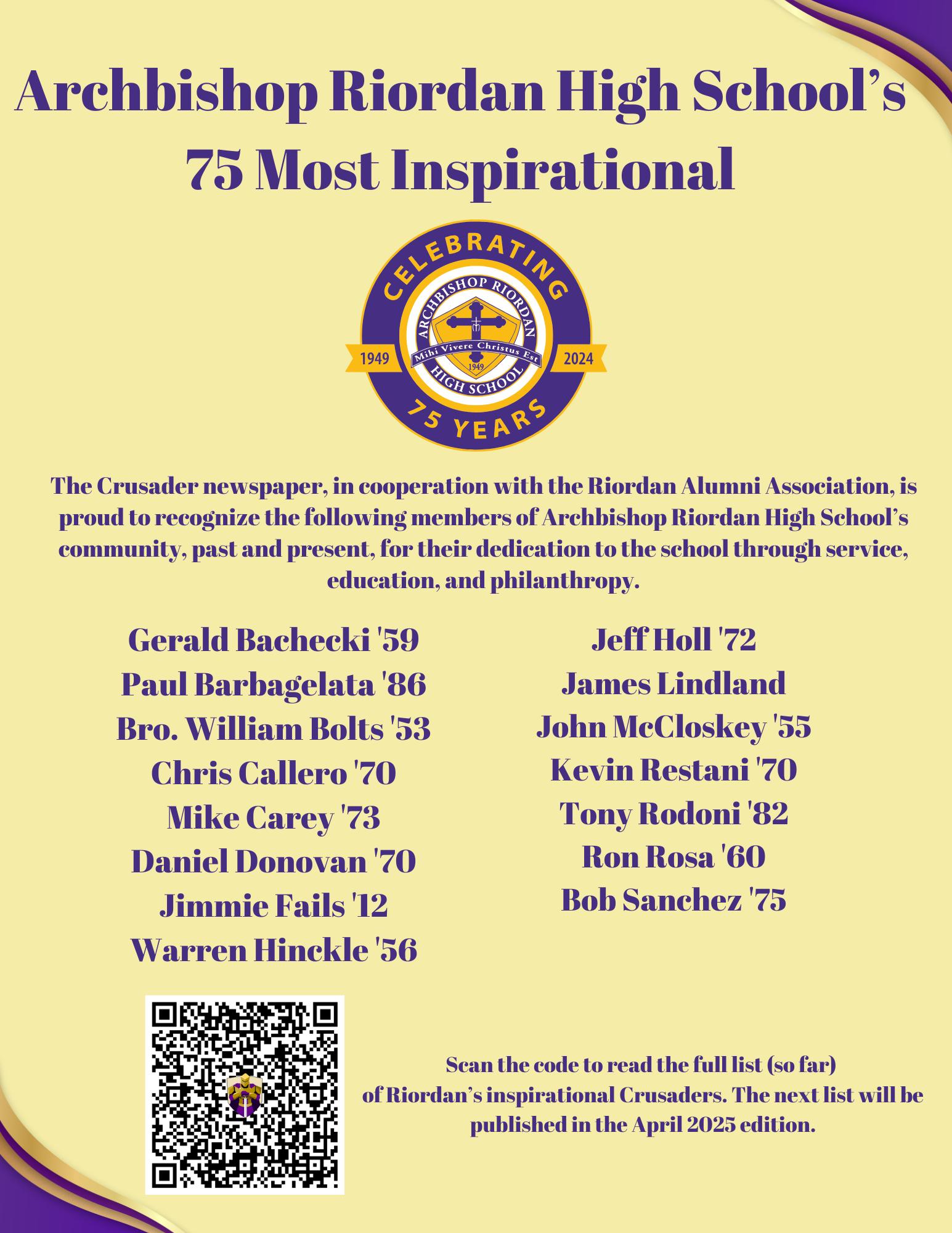
By Daniella Lainez ’26
Every year on Jan. 22, schools, families, and communities all over the world unite together to honor the legacy of one of the most impactful figures of the Catholic Church. Chaminade Day represents a special moment to pause and reflect on the life of Blessed William Joseph Chaminade.
Chaminade’s understanding and vision of key values like faith, learning, and service continues to inspire generations to come, proving that his influence is far removed from the past and will be forever present in the future.
At Archbishop Riordan High School, this tradition goes further than simply remembering the life of Chaminade himself. It is a special time when the community comes together to reaffirm the Marianist values that continue to shape students, faculty and alumni.
This year’s annual Chaminade Day Mass was a true testament to both tradition and progression. With the Mass being celebrated by former principal Father Tim Kenney, the liturgy brought the school together in solemn unity.
This Mass also served as an event to honor those who embody the Marianist spirit. The highly prestigious Chaminade Award was presented to Tony Sanchez Corea III ’80, recognizing his instrumental role in the campus
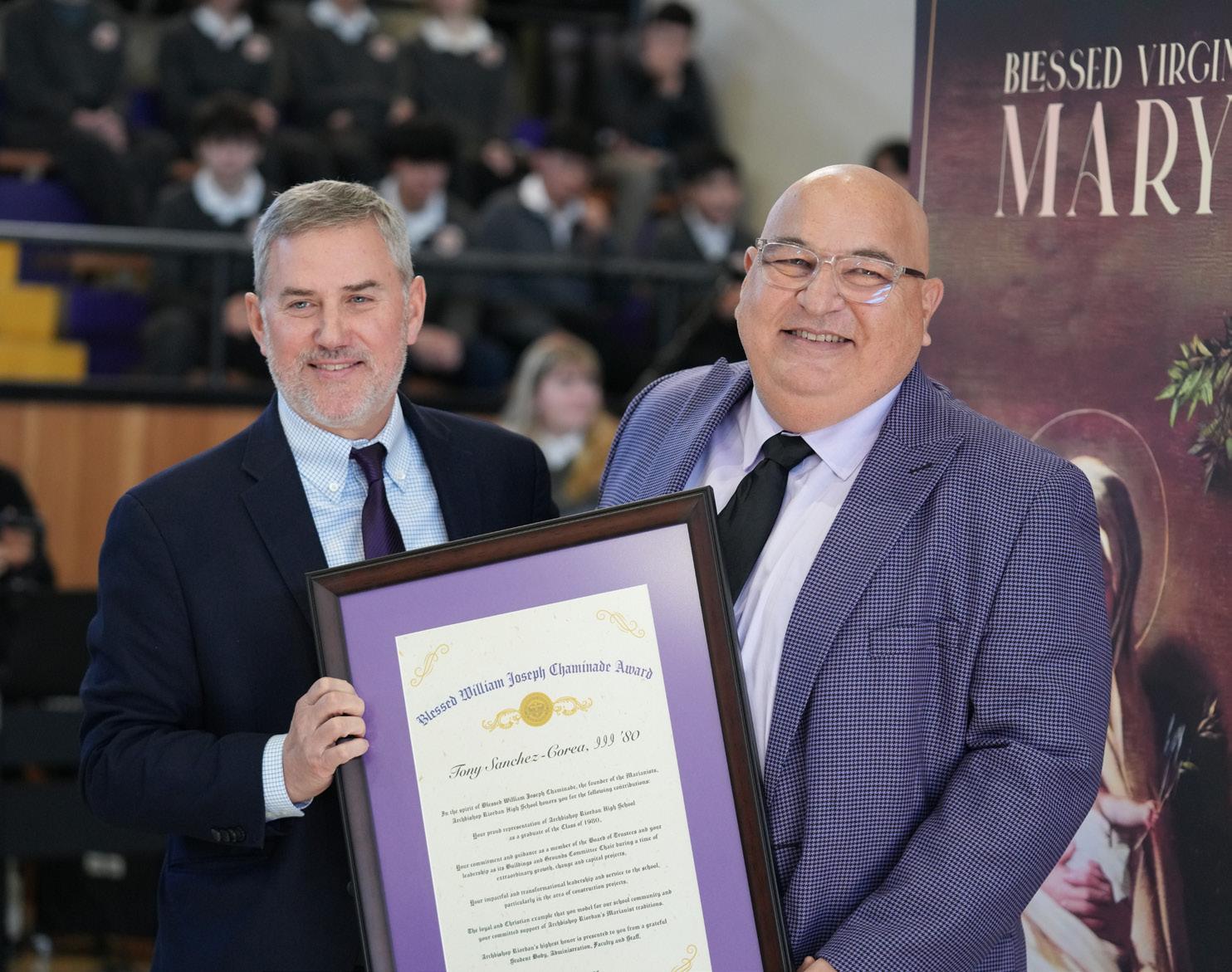
renovations that have transformed the school’s environment— a true example of the Marianist values. Corea said, “It is inspirational in that all of the previous individuals that have received this award in the past are true leaders to this school and I feel incredibly honored to be included. To continue my legacy here at Riordan, I hope to help the students grow together as a unit and help to grow the school and its facilities and make all aspects a better place for learning.”
Joseph Chaminade was a visionary priest who survived the persecution of the French Revolution. He dedicated his life to fostering and encouraging faith through education.
In 1817 he founded the Society of Mary, also known as the Marianists. In this he aimed to spread the word of God, serve the poor, and strengthen the Catholic Church as a whole throughout the world. His undeniable dedication leaves a mark that transcends to the present in the institutions
that carry his name and represent his values, including Riordan. The five Marianist values are encouraged and lived out in the curriculum and school community.
In addition to the award presentation, Sara Noguera ’27 made history as Riordan’s first female altar server. This moment spoke volumes to the progress and dedication to Riordan’s ongoing commitment to inclusion and leadership since becoming a co-ed institution.
Noguera said, “I have never been more proud to serve the Lord while also representing my school. I was definitely overwhelmed by the amount of recognition I received from my teachers and peers.”
Chaminade once said, “New times call for new methods,” according to Marianist.com. As Riordan celebrated his life and mission, the traditions remained prevalent, with their meaning evolving with each generation that flows throughout school.
Chaminade Day will forever be a meaningful and annual reminder to embrace and continue the legacy of William Joseph Chaminade. It represents a call to action to honor his mission, to embody his teachings through personal journeys, and to live with a sense of purpose while serving others with the same commitment and strength he embodies to this day.
By Josephine Andre ’27
This winter, the Riordan Armor Robotics team organized a drive to collect and recycle soft plastics. Special recycling bins for soft plastics, such as plastic grocery bags and cling film, have popped up around campus.
“One of the core principles of being a competitive robotics team under the organization we compete under is to really advance STEM outreach into our community,” said Jenny Stevens, the Robotics team’s head coach.
The Riordan Robotics team competes in the FIRST Robotics Competition every year, and this year the theme of the competition is “REEFSCAPE,” focusing on protecting marine ecosystems from the effects of climate change, which ties back to the drive.
“The only thing that we produce in this world, to try and make our lives better, that cannot be broken down into its original chemical constituencies is plastic,” Micheal O’Brien, who teaches AP Environmental Sciences, said.
Plastic pollution has continued to be a prominent symbol of climate
change, as images of steaming landfills and turtles choked with plastic dominate TV screens and the public consciousness. And soft plastic, which is significantly harder to recycle than rigid plastics, is often not collected in roadside recycling programs.
The robotics team wanted to raise awareness about soft plastic recycling and encourage people to think more about the waste in their daily lives.
Stevens said her students came up with the idea for the drive and organized it, doing their own research and talking to the school’s administration to make the drive happen.
Though the process of soft plastic recycling is complicated, the process of actually setting up the drive at school was relatively simple.
“It was actually really easy. We just had to register on their website and then they shipped us basically everything we needed except the trash bags to carry everything,” said Juliana Murguz ’25, one of the Robotics team’s cocaptains.

They organized through a company called NexTrex, which manufactures decking and outdoor goods from recycled plastic, and runs drives to collect those plastics in schools, workplaces, and neighborhoods around the country. Their company mission is to create eco-friendly products through the power of unity and community.
“Education and leading by example are the best way to get
people to change their behavior,” said O’Brien.
They are hoping the drive will help bring awareness to soft plastic recycling and get people to think more critically about the waste they produce.
Murguz added, “Our goal weight is a thousand pounds, but it’s not so much about the number as much as it is about making an impact and keeping soft plastics from getting into landfills.”
By Eva Bennett ’25
On March 6, students, families, and faculty will gather to celebrate the rich diversity of cultures within the Riordan school community at this year’s inaugural Cultural Night.
With one of the most diverse private school populations in San Francisco, Riordan takes pride in fostering cultural appreciation and inclusivity.
The event promises an evening filled with food, cultural performances, and traditions from around the world, organized by Riordan’s culture-affiliated clubs and students eager to share their heritage.
Paul Ha ’25, president of Asian Student Association (ASA) shared his excitement about the club’s participation.
“We are planning to prepare foods and teas from various Asian countries, including China, India, Korea, Vietnam, and more,” he said. “We also plan to incorporate traditional clothing such as Hanbok, Qipao, Sari, and possibly Barong.”
Along with ASA, every cultureaffiliated club is planning to show off their unique traditions at Cultural Night, including PAC, Black Student Union (BSU), Jewish Student Union (JSU), Latinos Unidos, Mediterranean Club, and Irish Heritage Club.
“We are planning on
performing two to three dances for the upcoming Cultural Night, a Samoan, Tongan, and Hawaiian dance,” KJ Dacoscos ’25, president of Pasifika Club, commented. “We are collaborating with SCDC (Samoan Community Development Center) and families to help with choreography for each of our dances.”
Beyond performances and food, many clubs hope to challenge common stereotypes about cultures.
“We plan on showcasing our different types of music, clothing, styles of dance art, food, and more. Our culture isn’t the typical flowers, beaches, and coconut. It’s way more than people really know, so we hope this event helps us be seen for more than that,” Dacoscos shared.
Caroline O’Connell ’25 is currently planning on performing traditional Irish dancing with Neve Devlin ’28.
“Cultural Night is a celebration of creativity, diversity, and community, where people come together to experience R community,” she shared. “It’s a night to appreciate different traditions and feel connected through shared cultural experiences.”
As the event draws near, students emphasize the importance of cultural appreciation and unity.
“I believe cultural appreciation
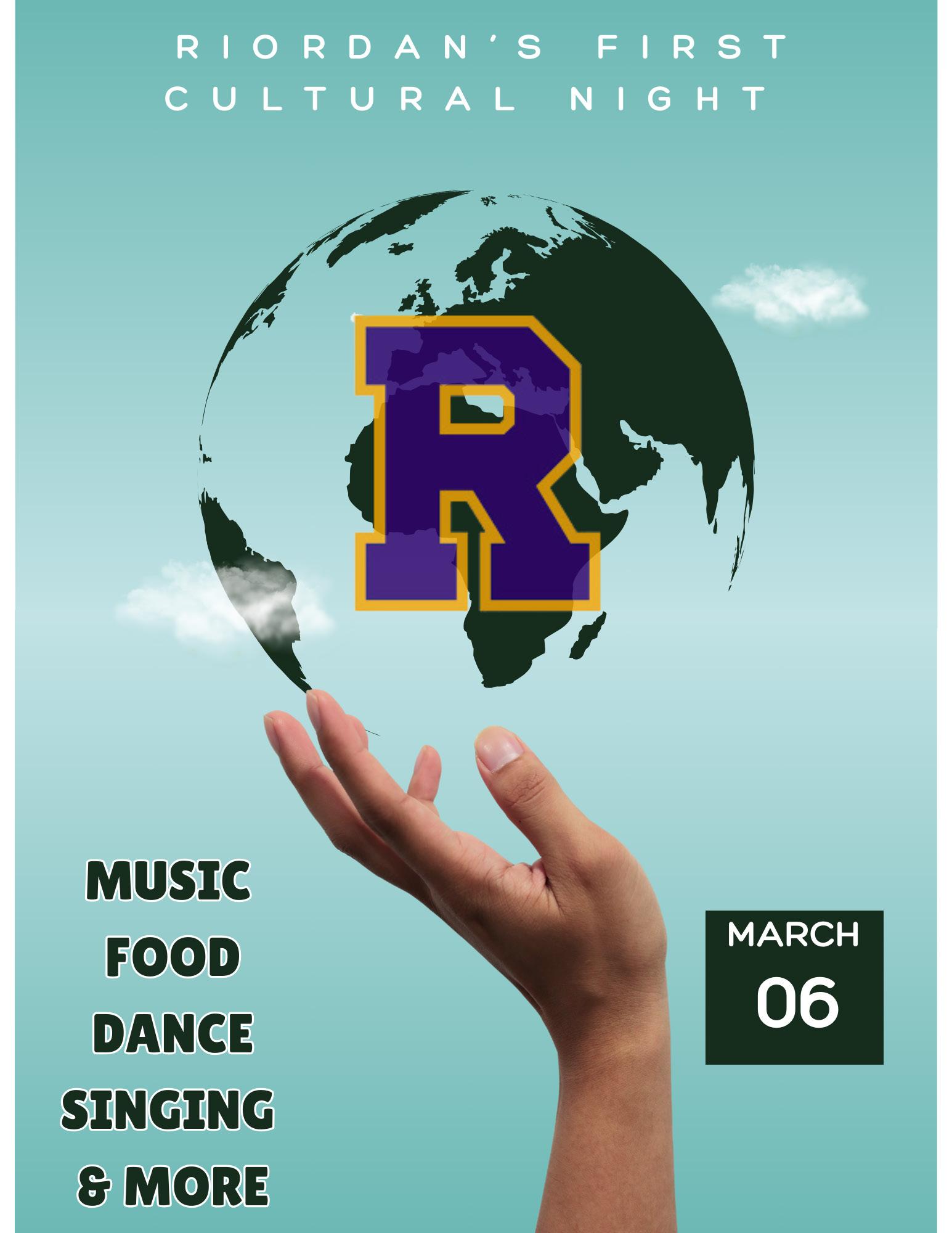
is important because one culture is not more important than another,” Dacoscos said. “Though
we might have different styles, views, or beliefs, we are all beautiful and equal.”
By James McDonell ’27
The front entrance at Archbishop Riordan High School has been named to honor the late Father Tom Seagrave ’60.
Riordan President Tim Reardon said that the change was made because an anonymous donor wanted to honor Fr. Seagrave for his exceptional work in the community.
“We had a generous donor approach us about doing something nice for the school while honoring his old friend, Fr. Seagrave,” said Reardon. The entrance was officially named the “Fr. Tom Seagrave Main Entrance” in December 2024.
During his life, Fr. Seagrave –– or “Fr. Tom” as he was known –– devoted much of his time and energy to helping students afford a Catholic education in the Bay Area, sometimes spending his own funds to assist families.
He was well-known in the community and frequently performed wedding and baptism ceremonies throughout the Bay Area. Fr. Seagrave was recognized for his kindness and generosity and for making people feel special whenever he spoke with them.
Ana Curtin, mother of Joey ’01, Jennifer, and Danny ’08, said, “As far as I can remember he was a loving presence in my life. He married my husband and I and became our lifelong friend
and religious touchstone.”
She added, “He was a tremendous patient listener who conveyed empathy and/or sympathy along with advice as needed. ”
Following his graduation from Riordan High School in 1960, Fr. Seagrave joined the seminary. After his ordination, Fr. Seagrave dedicated himself to caring for the poor at the parishes he served in.
In 2011, Fr. Seagrave was awarded the Chaminade Award, and the school renamed its chapel to honor Fr. Seagrave at that time. Riordan also established the Seagrave Fund to help students who are struggling with financial challenges. Fr. Seagrave died on Dec. 18, 2015 after a valiant fight against cancer.
Vice President of Advancement
Simon Chiu said, “The school honored him as much for his work in San Francisco parishes and schools as it did for his impact on Riordan. He served as an inspiration to so many people in the Riordan community through his work in schools and parishes.”
After his death, those who knew him started a petition to name Fr. Seagrave a saint. Ana Curtin said, “Although he may not have any documented miracles to his credit, I defy anyone to find a man who lived his life as Christ-like as him. To our family and many others we know he was saint-like. He epitomized the unconditional love of our Lord.”

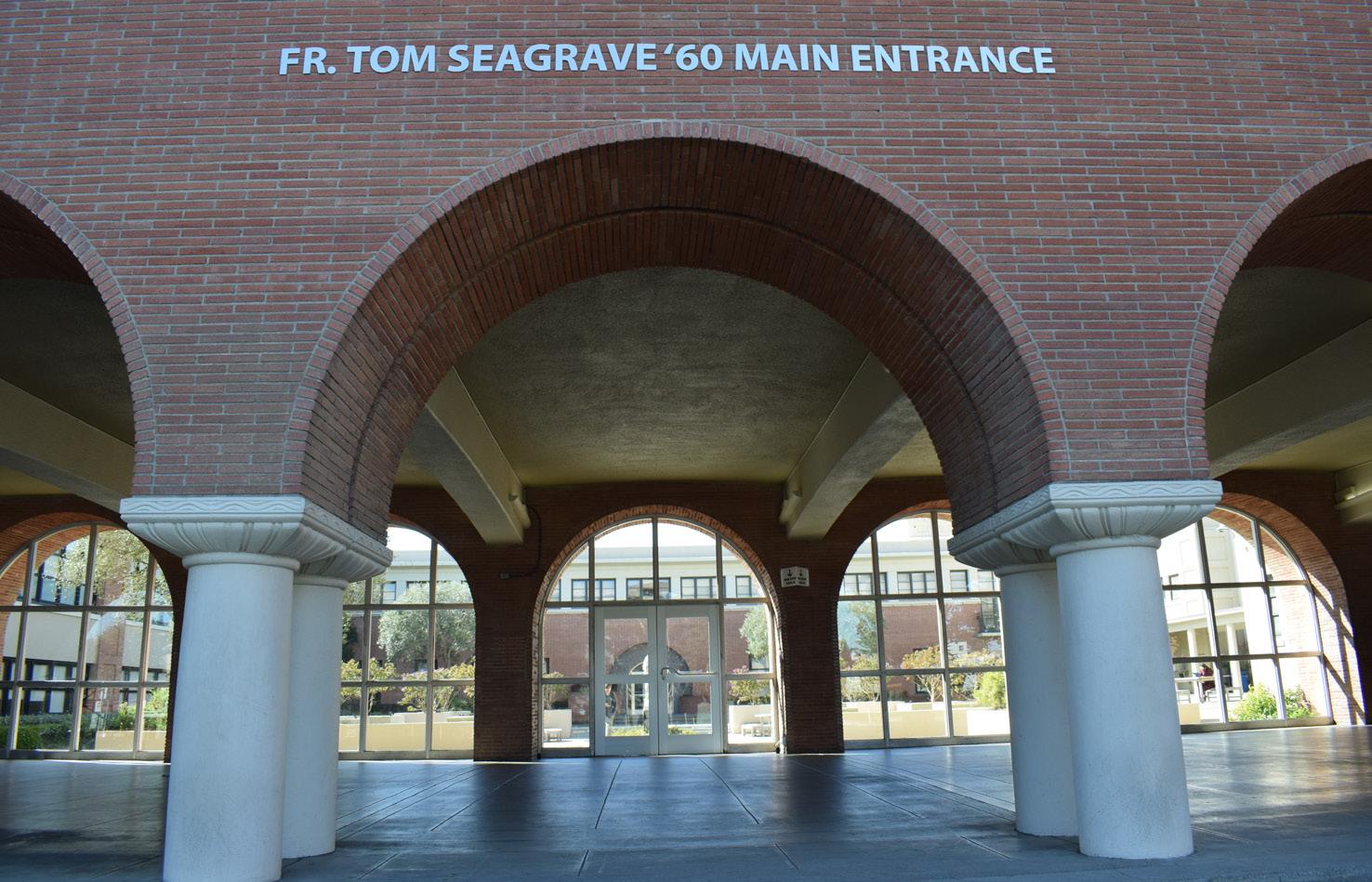
The Crusader Archbishop Riordan High School
By Ashling Greene ’26
In 2025, the Black Student Union, one of Riordan’s many cultural clubs, was reinstated by popular demand.
The BSU first appeared in 1974, when Riordan was still an all-boys school but began to fade in 2021 even as the number of COVID-19 cases decreased and students returned to campus.
According to Ahni-Saniya Branner ’26, the club was revived in 2025 to “promote a safe space for Black students to speak freely and express creative opinions.”
They had their first meeting on Jan. 9 and their moderator, Avishan Peer, stated, “After the first meeting, it felt really good to see all the students show up.”
Students can now come to the meetings and have a place to share their culture with other Black students. These meetings aren’t only for African American students, as students of all races are encouraged to attend. Being educated about the Black culture is what the club is striving for.
BSU wants to represent the Black students at Riordan respectfully and effectively.


“It is such a blessing to be Black. There are so many different branches of Black people around the world that deserve to be represented.
- Brianna Laval ’25.





Our youth is spent in three “sandboxes” (pre-school, grammar school, high school) for us to play and grow while facing our personal challenges, whether they are physical, mental, social, parental or financial. In each sandbox, we learn and adopt different interests, habits, qualities, virtues and values. We also make different mistakes, which we learn not to repeat. This book was written for today’s boys and girls to benefit from an earlier generation of Riordan students’ challenges, handicaps, experiences, disappointments, successes, failures and innate teenager stupidity to help you develop assimilation, character, independence, confidence, responsibility, self-motivation, humility, courage, integrity, pride, and loyalty in order to make fewer mistakes and “get it right” in order to be the best you can be. From the mud – the challenges and obstacles in life – grew a generation of lotuses, symbolizing mental evolution, rebirth and growth. This story is about Riordan students who made that journey.
“As a 4th generation San Franciscan, I appreciate that you are teaching San Francisco history through stories.” – Tim Reardon, ARHS President
“The authors left nothing out, such as, loss of cultural identities, schoolyard bullying, racial issues, adult prejudices, loneliness of being gay, and the ruination of alcohol. It showed the cold truth of their childhood and their mental strength and growth – a great down to earth book about kids in the early days at Riordan.” – Jameson Datoc, Riordan 2023
“Boys and girls supposedly have different interests, but we did so many of the same things at the same places.” – Bonnie Pischoff, Presentation 1958
“A first-class book... apart from the great text, the footnotes and appendices are amazing.” – Joe Fama, Riordan 1960
“Should be a class reading assignment like Catcher in the Rye.” – Guido Mori-Prange, Riordan 1958
“I loved the memories. They reflected on life experiences that contributed to whom we all became.” – Patricia Whitman, Mercy 1958
A free copy of this 534-page 2nd edition book is available to all Riordan students at www.sandboxbook.com
“It is such a blessing to be Black. There are so many different branches of Black people around the world that deserve to be represented,” said Brianna Laval ’25.
Peer praised the club’s leadership team, which has helped the club thrive. Along with Laval and Branner, BSU’s leadership team includes E’moni Ferdinand ’26, Zion Maguire ’26, and Michael Mitchell Jr. ’26.
Although they have only had a couple of meetings so far, many students have come to support their culture. The BSU plans to hold many fundraisers including selling food to raise money for sweatshirts and graduation sashes for senior members. They will also be part of Riordan’s inaugural Cultural Night next month.
With the momentum from this revival, the BSU intends to represent the African American community at Riordan and to spread positivity and inclusivity among students of all cultures.
By Vincent Douglas ’25
Over the past semester, a new series appeared on Riordan’s social media accounts: a podcast. Hosted by Priscille Alden, the school’s Digital Marketing Content Specialist, the Crusaders Connect Podcast gives insight into the lives of many individual figures of the Riordan community.
The episodes are currently released every few Wednesdays, but Alden hopes to stick to a weekly schedule in the future.
Podcasts, (especially those of the visual variety,) have grown in popularity over the past few years because of their ease to produce and relatability towards listeners. Each video is less than four minutes long, allowing for the information to be easily digested.
Alden said that she “saw it as an opportunity to connect authentically with students, faculty, staff, and the broader community.”
The first episode featured student body President Caroline O’Connell ’25, the second— Parliament member Benjamin Parker ’26, the third—Theatre Director Greg Callaghan, the fourth—Dance Team Coach Meghan Williams, the fifth— student-athlete Tara Dacic ’25, and the sixth—drama members Kenitoni Nau ’28 and Annabelle
Hazard ’27.
Parker said, “When I stepped on to the podcast, I felt that it was pretty mellow and welcoming. Priscille and Daisy [Bolger] were both very nice and obviously had been putting a lot of work into this project.”
Daisy Bolger is the school’s Brand Manager and works behind the scenes on social media. The guests are chosen based on relevancy to what is currently happening. For example, Callaghan was interviewed the week before the opening of the fall play, Emma.
The Riordan community’s response has been overwhelmingly positive. The first five episodes have a cumulative 1,600 likes on Instagram.
Genevieve Kohlmyer ’25 said, “I think it’s great. It makes our community more lively, adds a little bit of spice.”
The Riordan body prides itself on the strong Crusader Spirit. This provides an in-depth look into the individuals who make it all possible.
As Alden said, “It’s an opportunity to showcase what makes our community unique and to highlight the people who make it so special.”
It’s an opportunity to showcase what makes our community unique and to highlight the people who make it so special.
- Priscille Alden
By Vincent Douglas ’25
On the evening of Saturday, Jan. 18, American users of the popular social media app TikTok found that they had lost access to it as it was banned in the United States. However, the next morning, the ban was lifted, accompanied by a message which read, “As a result of President Trump’s efforts, TikTok is back in the U.S.!”
This final detail gained some scrutiny since Trump was the first to begin talk of banning the social media app in July of 2020, nor was he in office at the time the ban was lifted.
Diego Gomez ’25 said, “[TikTok] got reinstated before he was president. He did not do that stuff.”
Trump first raised concerns over the app selling user information to the Chinese government.
Still, Trump signed an executive order on his first day in office delaying the ban for 75 days, according to Forbes. This means that the app’s owner, ByteDance, has until April 5 to

to sell.
Kat Belfor ’27, who has been on TikTok since 2020, said, “I think that was smart because that gets a lot of the young people on his side.”
Despite the ban being lifted, the app was unavailable on the app store until Feb. 13.
Many people, including Belfor, deleted TikTok when the ban went into effect, and couldn’t
dowload it for a few weeks.
Several internet personalities and billionaires have spoken publicly about buying the app to save it in the United States but nothing is official yet.
“
I think that the ban has affected a lot of people negatively because of the community that [TikTok] created, but also I think that fast form content is genuinely unhealthy for developing minds.”
- Kat Belfor ’27
varied over concerns of national security, attention spans, and freedom of speech.
Belfor gave the opinion, “I think that the ban has affected a lot of people negatively because of the community that [TikTok] created, but also I think that fast form content is genuinely unhealthy for developing minds.”
Users are eagerly awaiting to see how the future of one of the largest social media apps in recent years will play out. Will TikTok stay put or will it leave again?
African American musicians made their mark on music, creating new genres
By Erin Quan ’26
Gospel, jazz, and the blues are three forms of music which originated from the American South.
It was because of the lives of those who were enslaved, formerly enslaved, and the descendants of those who were enslaved that this music rose to be listened to on the daily.
As Black History Month comes around each year, it is important to remember all inventive creations attributed to Black Americans, including their contributions to the music industry.
Emilia Ross ’26 said, “I know from U.S. history that jazz music kind of came up from specifically African American culture, which united them during the time and still unites people today.”
History classes, for example, incorporate lessons about music in the South, as it goes alongside the teachings of many famous Black figures in history.
Throughout centuries, music has been an essential part of everyday life. In Christianity and Catholicism, music is a big part of the services and Masses.
Isaiah Mateo ’26 said, “I think gospel music is timeless. As long as Christianity and Catholicism stay alive, the music genre stays alive. It is an essential part of religion and practice.”
YouTuber Mr. Beast posted a video on Instagram in which he said “TikTok we mean business” after claiming to have gotten out of a meeting with several billionaires. Thoughts on the ban to unite.

Unity was scarce in the late 19th century and music brought people together.
African Americans are credited with creating, popularizing or making their mark in the genres of jazz, hip-hop, soul, rap, ska, calypso, neo-soul, swing, bluegrass, pop, funk, R&B, reggae, Afropop, techno, country, rock n roll, house, trap, and doowop.

Artists like Ray Charles and Etta James paved the way for Kendrick Lamar and Beyoncé to not only compete in the music industry, but to succeed. The music industry is a notoriously difficult business, but many African American artists have succeed by reinventing themselves and creating genres.
Genres that came about from the South transformed music entirely. These songs were a part of the protests for equality, and provided motivation to keep fighting, as well as building community.
Oftentimes, it will go unnoticed or it is forgotten that Black people were the reason behind some of the genres we listen to today.
Bob Harrington, social science
instructor at Riordan, said, “It is important to recognize the unique achievements of African American artists in order for our nation to continue aspiring towards a ‘more perfect union’.” He hopes to open an African American Literature class this fall.
Jazz, the blues, and gospel were all types of music that African Americans in the South used to celebrate, grieve, tell stories, motivate and most importantly,
In 1959, Berry Gordy founded Motown. “Part street corner symphony. Part storefront church gospel. Part jazz joint on a Saturday night,” as described by MotownMuseum.org, the production company introduced America and the world to artists like The Supremes, The Temptations, The Four Tops, and the Jackson Five.
Fast forward to the 1990s, and African American musicians were once again creating a genre that was once known only to certain groups, but was quickly becoming mainstream: rap.
Death Row Records, whose stars included Tupac, Dr. Dre, and Snoop Dogg, amassed a fortune of $150 million per year before its ultimate demise.
Today, with Beyoncé winning a Grammy for her country music album, it’s clear African Americans are an integral part of the music industry, from gospel choirs to stadium concerts.

Photo by Allison Krieser
By Aiden Pavon ’25 and Elizabeth Walsh ’25
On the night Jan. 7, two fires engulfed west Los Angeles, resulting in many people within the fire hazard zone being called to evacuate with varying levels of warning.
Due to harsh drought conditions and winds north of 80 miles an hour, what began as a small fire in the West Palisades quickly escalated from 10 acres to 23,707 acres. Only a few hours after the Palisades fire began at 10:35 a.m., a second major fire ignited in Eaton at 6:18 p.m., which, while not as expansive, was still incredibly devastating and dangerous.
As of Jan. 31, both fires led to a combined total of 37,496 acres burned, with 12,372 buildings threatened.
Since extinguished, the fires left a combined total of 37,728 acres burned, 29 civilian fatalities, and 10 firefighter injuries. According to fire.ca.gov, due to the Eaton fire a striking, total of 38,608 households were affected. However, even more staggering is the 43,056 total households that were affected by the Palisades fire.
“I could see the fire on the hills from my bedroom window and saw the whole thing happening, so I was able to prepare and
evacuate,” said a resident of Sunset Mesa, who did not want her name publicized.
She added, “They updated people on certain websites like recovery.lacounty.gov/palisadesfire/. Mostly, we have relied on each other in WhatsApp chats.”
The livelihoods of many were left completely turned around in the fires’ wake. Some were students who attended schools that burned down. One of these students is Madison Rodriguez, who went to Palisades Charter High School, one of the schools destroyed by the fire.
“My everyday life has changed completely because of the fires. I can’t go to school in person like I used to and for basketball I have to drive myself to all the games instead of taking the school bus with my team,” he said.
Rodriguez added, “It’s been hard not seeing my friends every day like I normally would. Everything just feels different and it’s been an adjustment trying to get used to this new routine.”
Rodriguez also had many friends evacuate and lose their homes and all of their belongings but the clothes on their back. Believing that the situation could’ve been handled better, Rodriguez stated that help was too slow and people were not provided the things they needed.
“There should have been better evacuation plans, faster aid, and
more effort to prevent so many people from losing everything,” he said.
Levels of warning differed for people depending on where they lived. Some were evacuated as soon as the flames ignited; for others they were alerted later depending on the fire’s path.
Rebecca Henning, a long time born and raised LA resident whose parents were required to evacuate, said, “For my parents, who came to my house when they evacuated with their dog, it was extremely scary and stressful. However, they did have plenty of warning and they were properly prepared with go-bags ready so they knew they had the most important things with them.”
Evacuation alerts were sent out to people via phone notifications. “We knew that there was a fire for a number of hours but once the evacuation notice was on my iPhone, we had about 30 minutes,” stated Monte Baier, a long time Los Angeles resident, who was required to evacuate due to the fires.
Although the fires are now contained, the thousands of people who have lost their homes still mourn with family and neighbors over their now scorched past lives. However, while the origins of these fires remain still unknown, the damage caused is undeniably devastating for the city of Los Angeles and its people.
By Ishaan Gupta ’26
San Francisco mayor Daniel Lurie took office on Jan. 8, succeeding former Mayor London Breed. He won the final round of voting with 56 percent. With the new change of scenery, San Francisco will undergo many changes with this new leadership.
Aiden De Souza ’26 said, “I feel like the city has had the same issues for a while and we need new leadership to spark change.”
Lurie introduced initiatives to address the homelessness and fentanyl crisis. On Feb. 12, an ordinance was signed declaring the fentanyl crisis a state of emergency.
Lurie also announced that a shelter in the Tenderloin would be opened around April, accepting people with urgent mental health issues and substance abuse.
English teacher Dan Baxter, who attended the inauguration, said, “Just in general, my feelings are hopeful.”

The declaration came after San Francisco’s Board of Supervisors voted to give Lurie greater powers and flexibility.
Lurie is the heir of the Levi Strauss fortune, and comes from a line of long wealth.
He also founded the Tipping Point community in 2020, a
nonprofit that has raised over $500 million and has provided housing, education, and employment to many around the Bay.
Baxter said, “I think as a nonprofit leader he probably has a lot more experience sort of building coalitions.”
Lurie also launched an initiative called Permit S.F, which focuses on speeding up approvals for housing and small businesses and improvement on permit technology.
With Lurie leading the City, many are looking forward to a bright future.
By Erin Quan ’26
Dennis Richmond, an American news anchor for KTVU, died on Feb. 5 at the age of 81.
Richmond was born on May 26, 1943 in Rossford, Ohio. Following his graduation from Rossford High School in 1961, he served in the United States Army for three years in the 82nd Airborne Division.
He attended Wayne State University for two years and then Columbia University Graduate School of Journalism with a scholarship during his time at KTVU.
In 1968, he joined KTVU as a clerk typist. Richmond became one of the first African Americans to be the chief anchor of a major TV news broadcast. He enjoyed his work there, co-anchoring with Barbara Simpson, Elaine Corral, Leslie Griffith, and lastly, Julie Haener.
Richmond worked at KTVU for 40 years, starting as a clerk typist and moving through the ranks for nine years, until he became an anchor for the rest of his years. For a few years, he was also an actor, starring in True Crime, The Net, and Copycat.
Richmond was widely known for his authoritative voice and professional straight forward delivery during his many interviews and shows. He retired on his 65th birthday on May 26,

important because your identity shapes the way you report the news. Having diverse reporters means diverse coverage and a more nuanced understanding and empathy of the stories you cover.”

2008.
Richmond’s latest co-anchor, Julie Haener shared on a newscast that he had suffered a heart attack and a devastating fall. A few weeks later, he died in the comfort of his home with his wife, Deborah, holding his hand as he took his last breaths, according to KTVU.
Claudine Wong, a fellow reporter and anchor at KTVU, shared, “He was both an inspiration and a support and even years after he retired, he could light up a room full of journalists.”
Sal Castaneda ’82 “started working with him in the 90s. I worked with him until his
retirement in 2008.”
He said, “We used to watch Dennis Richmond growing up. He was one my dad’s favorite TV people. When I began working with him, I was a little intimidated because of his vast experience. He ended up being a great coworker who showed, by example, what it takes to be a conscientious journalist.”
He added, “As a student at Riordan I never imagined I would one day be working alongside one of the most well-known journalists in TV news.”
Angela Jia ’25, editor-in-chief of The Crusader, said, “Diversity in the newsroom is incredibly
Castaneda agreed, saying, “He was iconic because he was one of the first African American men to be the main nighttime anchor at a major TV station the Bay Area. Even more important than that, was the way he took his job very seriously. He was the essence of a serious journalist who gained the trust of Bay Area viewers.”
Richmond leaves behind his wife and stepson, as well as a daughter from a previous relationship and two grandchildren.
He will be missed dearly by friends, family, the KTVU team, and fans all around the Bay Area. His calm manner and strong presence around his team and in the newsroom will be greatly commemorated and appreciated.
Castaneda said, “Dennis’ legacy is important because he showed that other people of color could rise through the ranks of journalism and tell stories.”
Days before his retirement from KTVU, he hosted his last broadcast which gathered around 400,000 viewers.
His last words on this broadcast were, “For the last time, it’s with great joy and great sadness that I say goodnight and goodbye.”
By Aiden Pavon ’25
Earlier this month, the mega pharmacy chain Walgreens announced that it would be closing 12 stores in San Francisco city-wide.
Those locations are 1201 Taraval St., 3201 Divisadero St., 1363 Divisadero St., 825 Market St., 1750 Noriega St., 5280 Geary Blvd., 1524 Polk St., 1301 Franklin St., 1189 Potrero Ave., 135 Powell St., 5300 3rd St., and Ingleside’s 1630 Ocean Ave.
In a statement, the company said closures were due to “increased regulatory and reimbursement pressures [hindering their] ability to cover the costs associated with rent, staffing, and supply needs.”
Many San Francisco residents rely on the pharmacy chain, and according to the San Francisco Standard, after the closures over 65,000 San Franciscans will lose the only pharmacy in their neighborhood. Though, not everybody is affected equally. Joshua Greenbaum ’25, resident of Westwood Park, said, “My family now has to find another

“
My family now has to find another Walgreens to get medication from. It means more time taken out of our day that could be spent working or spending time with family.
- Joshua Greenbaum ’25
Walgreens to get medication from. It means more time taken out of our day that could be spent working or spending time with family. The Walgreens closing doesn’t create a huge issue for us. It just means that something like walking down the street to get a card will now take just a few minutes longer.”
Receipts from closing stores tell customers where the closest Walgreens location is that will remain open.
San Francisco is not the only place affected by these closures, though. The company also announced that they will close over 1,200 stores in the country over the course of the next three years in an effort to increase earnings and decrease costs.
According to CNN, retail analyst Neil Saunders said the closings were “emblematic of a company that is in trouble and is trying to course correct.”
These closings would be highly significant, and potentially harmful to thousands of Americans nationwide.
By Alessandra Leon ’26
As Americans celebrate Black History Month, focusing on African American achievements, Black newspapers are sometimes forgotten – or even completely unknown – but they have existed since 1827.
From writing the events that shine a light on the racism and inequality towards Black Americans, to discussing their outstanding accomplishments, traditionally Black newspapers have paved the way for African Americans to have a voice in democracy and educate those inside and outside their communities.

“Words can’t fathom the amount of joy it is to learn something new in Black history. Black newspapers I feel is the way to stay informed with racial injustices, be informed within our own community,” Campus Safety team member LeVander Brown said.



The first ever Black newspaper was Freedom’s Journal in 1827. It was a first in Black history that African Americans could finally read a Black owned newspaper about the realities of unjust dilemmas in their neighborhoods and beyond. By acknowledging the first Black Newspaper, it encouraged other journalists to step up and create their own newspapers.
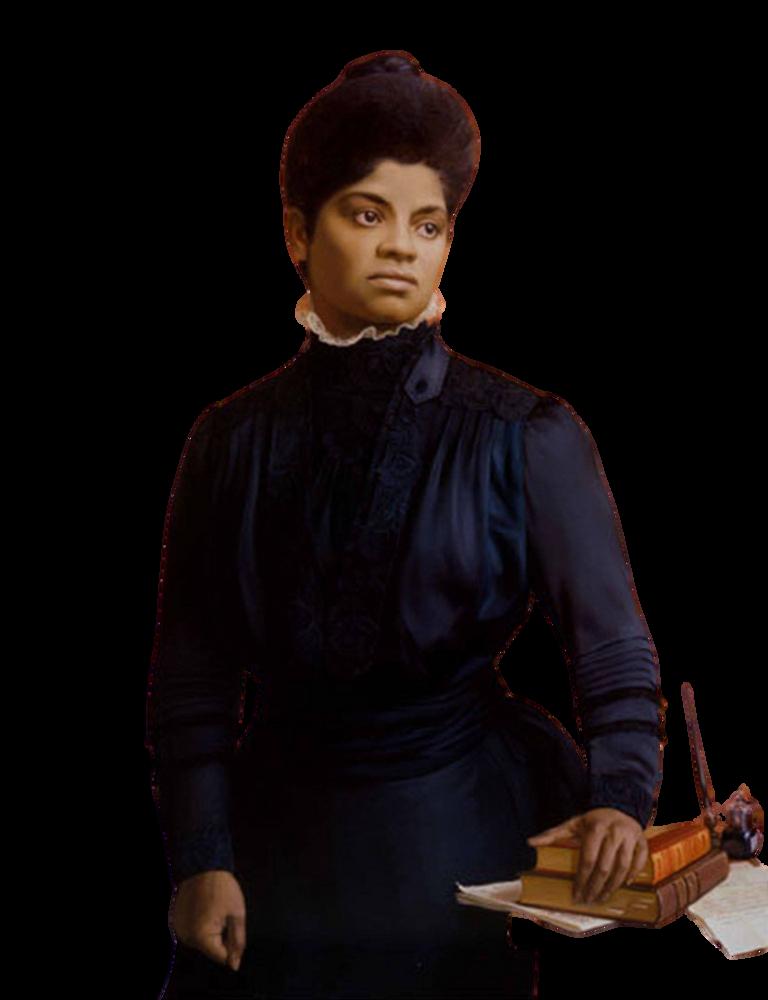
who writes for The Crusader and plans to pursue a career in sports journalism, said, “I believe it’s important to have these ethnic newspapers because it is another great way to promote the diversity and culture of not only a community, but the world.”
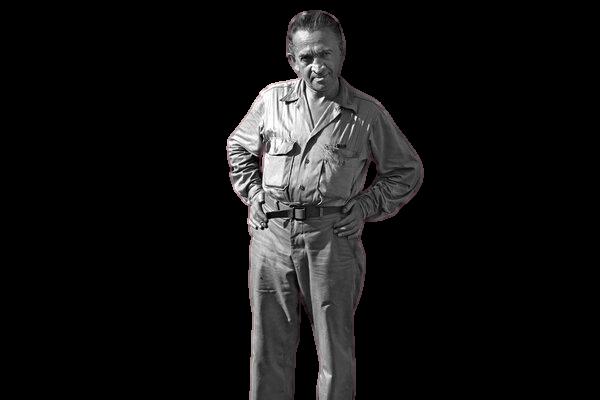
Black journalists achieve what larger newspapers cannot or do not: cover issues in Black communities. They have understanding and empathy to write and interview people who
“Black newspapers represent the voiceless, and kept those willing to fight informed,” Brown said.
Black journalists and Black writers in general have impacted communities as role models.
“An influential journalist to me that I have followed is Stephen A.
Smith,” Brown said. Jones-Smith said, “One of my main heroes is Chauncey Bailey. When I first took journalism, he was the first journalist I wrote about. Seeing his work and dedication to expressing the news is one of the main reasons I plan to pursue a career in journalism.”
Black newspapers represent the voiceless, and kept those willing to fight informed.
- LeVander Brown, Campus Safety team member
Beyond iconic Black journalists like Ida B. Wells and Charles Loeb, others have parlayed their non-fiction writing skill and
“I really look up to Jewell Parker Rhodes, who is a Black bestselling novelist. I look up to her because in her book...she teaches in a juvenile setting for younger people, the reality of racism and the complete unfairness it’s paired with,” said by E’Moni Ferdinand ’26.
Black History Month makes African Americans feel deeply for their ancestors’ sacrifices, pride within themselves, and acknowledgment of their heritage.
By Vanessa Gonzaga ’27 and Angela Jia ’25
Immigration and Customs Enforcement (colloquially known as ICE) has been circling all around the United States, including the Bay Area–a multicultural hub for Asian and Latino immigrants.
Their intention is to detain and deport undocumented immigrants, as ordered by reelected President Donald Trump, who made anti-immigration sentiment a key angle in his campaign. Mass deportations started in January 2025. According to ICE data and NBC News, they have deported thousands of immigrants all over the country.
These deportations are affecting the immigrants and their families’ everyday lives. The immigration agents are doing whatever it takes to deport as many undocumented immigrants as they can, even going inside of public transportation, churches, schools, and even just circling around the streets.
In the past, it was not permitted for immigration agents to go into schools and churches, but now the law has changed.
One undocumented immigrant said, “There are parents that are scared to take their kids to school
because they are worried that one day they will drop off their kids at school or an event and not be able to come back and see them again, scared immigration will detain them.”
Stories are swirling that ICE has been seen circling around houses with their trucks and playing music, acting as if they were an ice cream truck, trying to lure kids and families outside of their homes. They have also been spotted on the Muni buses, looking for people who are undocumented, by getting on the bus and checking everyone’s ID.
According to an immigrant, who did not want to be named, “Taking the bus every day to and from work has been much more worrisome, knowing that ICE can be on the next bus that I get on, and anything can happen in an instant.”
Jocelyn Aguilar ’27 said, “While I think everyone may be scared, it won’t stop them from going out, because at the end of the day, they came to this country for a better future, so not going to work isn’t how they would’ve imagined it.”
On Feb. 16, members of Riordan’s Latinos Unidos participated in a march and rally in support of immigrants that culminated at San Francisco City Hall.
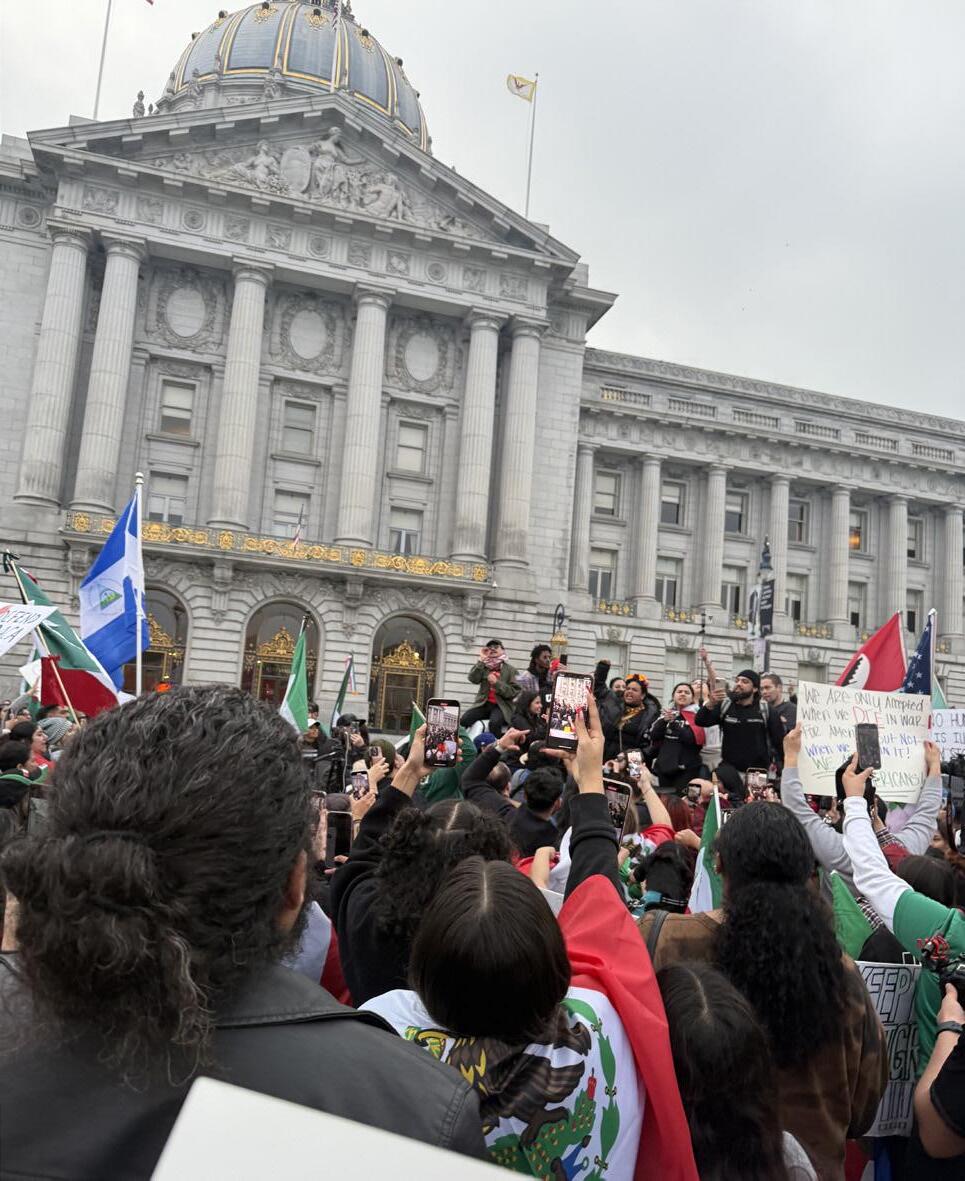
Laila Briceno ’25, leader of the executive board, said, “Latinos Unidos decided to attend the protest because we knew our voices mattered. Staying silent was not an option when our community was being ignored and disrespected.”
According to Briceno, the protest was about “standing up for our rights, for justice, and for the future we deserve. It was about showing that we are strong,

Scan the QR Code above to connect to the Latinos Unidos Instagram account for more photos and videos.
At left, members of Latinos
united, and unafraid to demand change.”
She added, “During the protest, I felt powerful like every chant, every step, and every sign held the weight of our history and hopes. It wasn’t just a moment; it was a movement.”
Finally, “Seeing so many people fighting for the same cause made me believe that change is possible, and we are the ones making it happen.”
By Keira Wallace ’26
Over 400 years ago, a saint was born in the Catalan region of Spain. This saint, Peter Claver, would be known as the “slave to the slaves.”
Saint Peter Claver obtained this name by dedicating his life to helping slaves in Cartagena, or present-day Colombia.
According to Deacon Chris Mariano, a member of campus ministry, “He truly devoted himself to the service and ministry of the slaves that were being traded from the African continent. He would minister to them as they would arrive in the Western hemisphere in the Caribbean and would give them care through medicines and food.”
During the 40 years that Claver spent in the “New World,” he converted and baptized over 300,000 slaves. Much of this accomplishment he owes to the help of his holy friend, Alphonsus Rodriguez.
Rodriguez, according to an article by Vatican News, was an “elderly, uneducated lay brother who was the porter at the Jesuit college,” and though he was not considered smart, “a life of suffering had taught him to listen to God.”
In Claver’s early years, he knew he would serve God but was unsure how. Meeting Rodriguez revealed his true calling. After Rodriguez convinced Claver to


travel to the “New World,” his real work began.
During the early 1600s, Cartagena was a center of the slave trade that brought nearly 10,000 new slaves to the region every year. There, Claver dedicated the rest of his life to protecting and helping them.
Saint Peter Claver preached, converted, baptized, and fed a large number of the slave population whilst working to change people’s attitudes towards slavery. His work continued up until the day he eventually died in 1654.
“

He would minister to them as they would arrive in the Western hemisphere in the Caribbean and would give them care through medicines and food.
- Deacon Chris Mariano
Now, during Black History Month, Catholics reflect on how God’s message inspires advocacy. Claver’s teachings urge people to speak for the voiceless.
“We can apply these teachings to our daily lives by serving whoever might be in want or need of extra support, whether it’s on a physical or emotional level,” said Bobby Gutierrez ’25. “We can also treat one another with kindness and respect, whether we are in a work, school, athletic, or other setting.”

By Loghan Hwang
After five long years, the beloved Notre Dame Cathedral is finally back open to the public. In April of 2019, a devastating fire occurred in it, nearly destroying the 862 year-old Cathedral.
The cause of the fire is still unknown but many speculate that it was because of the scaffolding surrounding the cathedral. Another speculation is that a security guard was smoking inside.
Michael Vezzali-Pascual ’88, reflected on that day, saying, “Like many other people, the day that I saw it on TV engulfed in flames, I was standing there in front of the TV, weeping, because it’s such a beautiful place.”
“I never would have expected such a thing to happen. I’m not even sure how it happened to be honest. But I would have expected them to have more measures to prevent a fire,” said Dylan Dubriwny ’26.
The five-year restoration process came with a hefty cost of over $700 million. Many citizens donated, raising $960 million towards the reconstruction of the spire and other burned parts of the cathedral.
Luckily, art historian Andrew Tallon made a 3D model of Notre Dame, which acted as a reference. Notre Dame reopened its doors on Saturday, Dec. 7, 2024. A 2-hour ceremony followed with
many notable people attending such as Donald Trump, Elon Musk, and even Prince William of Britain. The reopening had Catholic traditions accompanied by a sprinkle of politics.
“It’s a beautiful monument in Paris and I’m happy to see it come back,” said SOTA student Noe Abbassidi ’27.
About 170 bishops and 106 priests from all over the world attended this ceremony to celebrate the joyful reopening.
Having visited Notre Dame in December, the inside was as good as new and an extensive line formed outside of the cathedral to go in.
Much of the inside was near perfect, almost like a fire didn’t even occur. Outside, much of the cathedral was rebuilt though scaffolding still remained near the spire.
Dubriwny also said, “I would love to visit Notre Dame again, especially to refresh my memory of the monument. I visited a few months before it burnt down so I’d really enjoy it if I were able to see it again.”
Vezzali-Pascual called it “an inspiration and a wonder of architecture.”
There are many great improvements to come for the cathedral. Many are looking forward to seeing the cathedral fully restored and back to its original beauty.

By Aiden Pavon ’25
For the first time in recent memory, Riordan students got the rare opportunity to attend Close Up during the presidential inauguration.
Unfortunately, though, the students were unable to witness the inauguration of President Donald Trump in person due to extreme cold concerns.
Despite that, students were enveloped in America’s political and governmental systems. They saw different sites, and processes, including a Supreme Court hearing.
Joshua Greenbaum ’25 said, “I learned way more than I thought I would. I’ve always had a strong pull of wanting to take action on something when I see injustice, but meeting and talking with others who also wanted to help create solutions to challenges that people across the country face was truly amazing.”
They were also able to broaden their perspectives, make new friends, as well as memories.
Marcus Appleby ’26 said, “Close Up was a really eye opening experience for me because I was able to not only expand my view on the world but I was also able to make new friends and connections.”

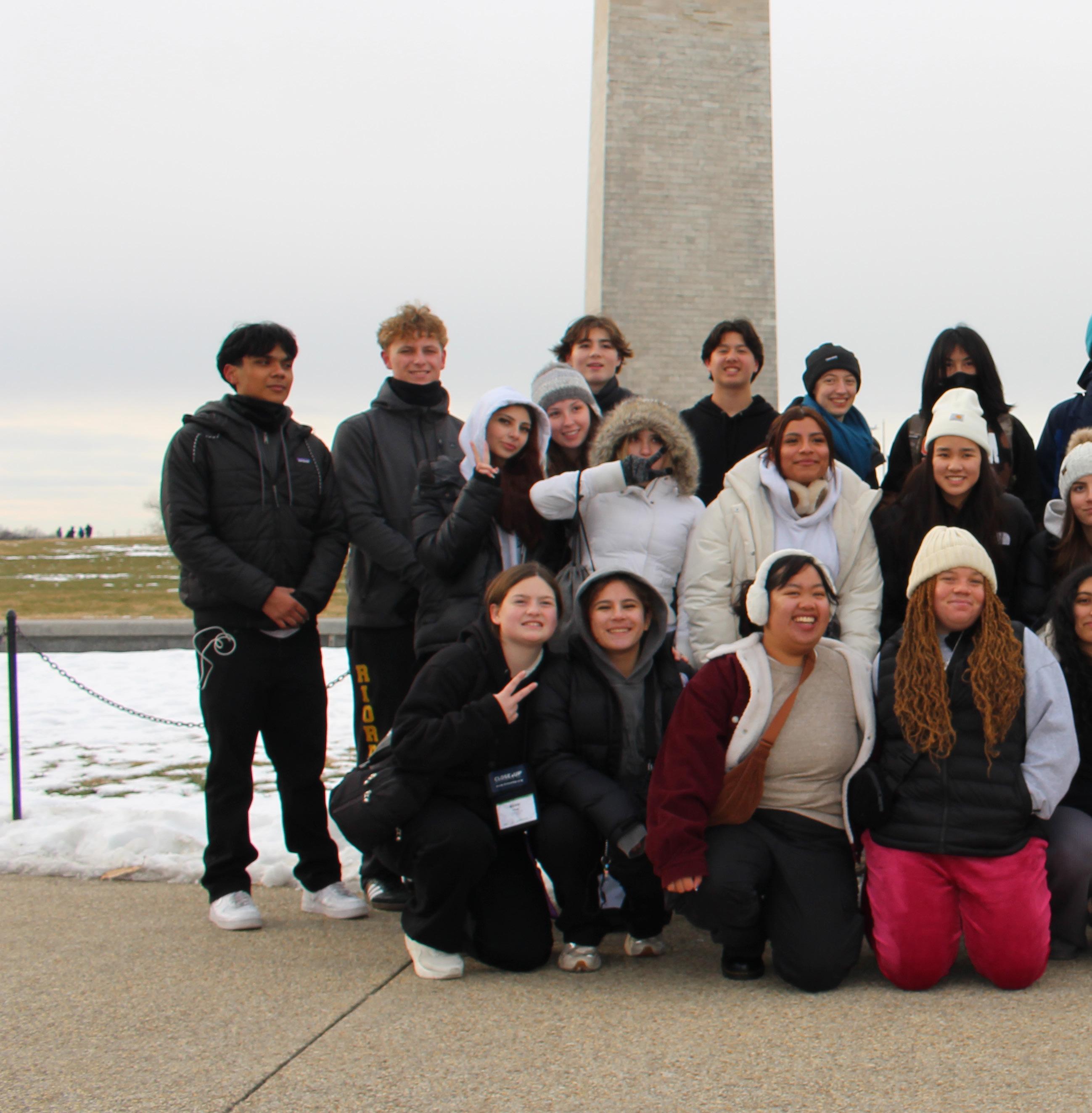

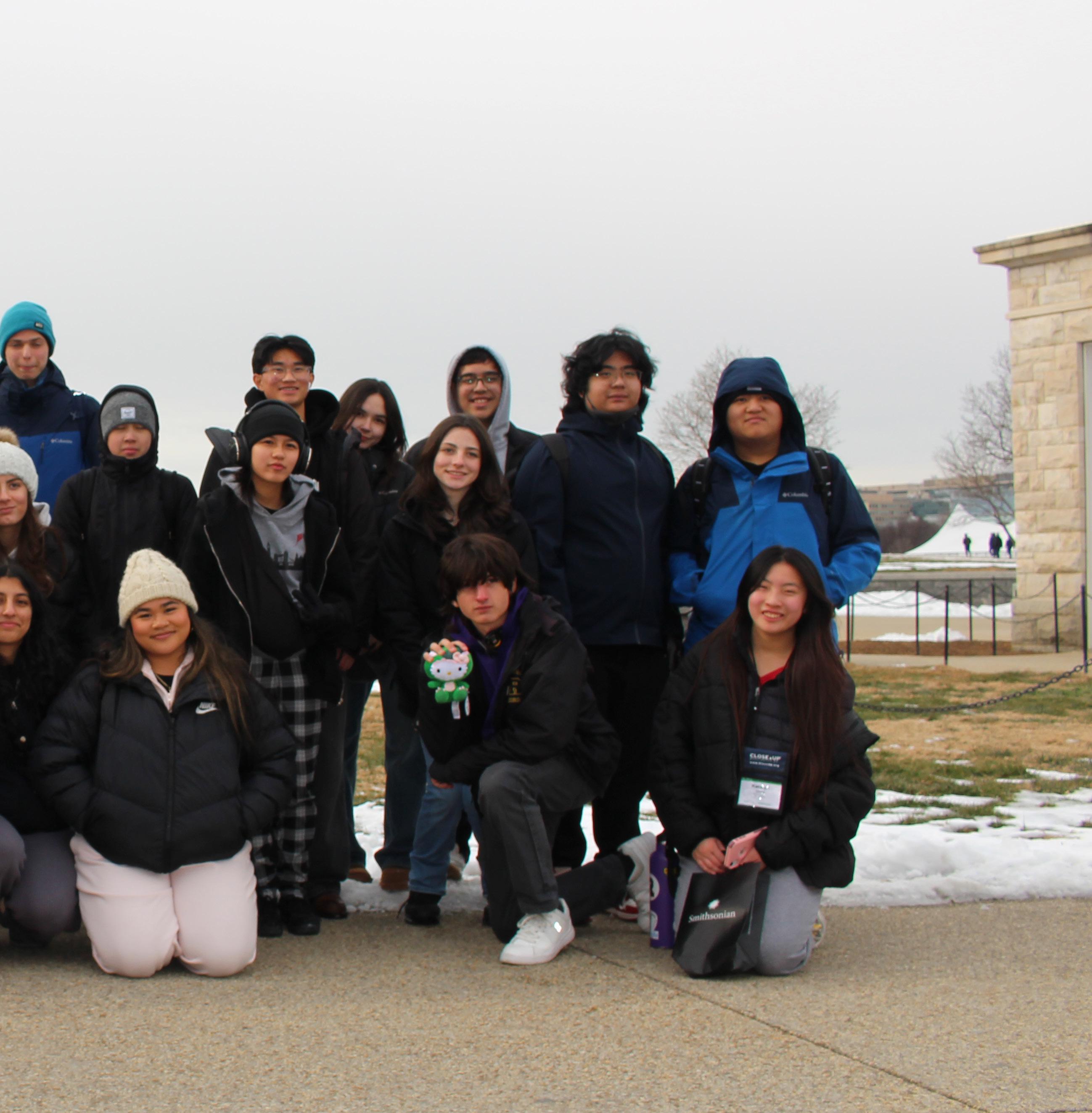
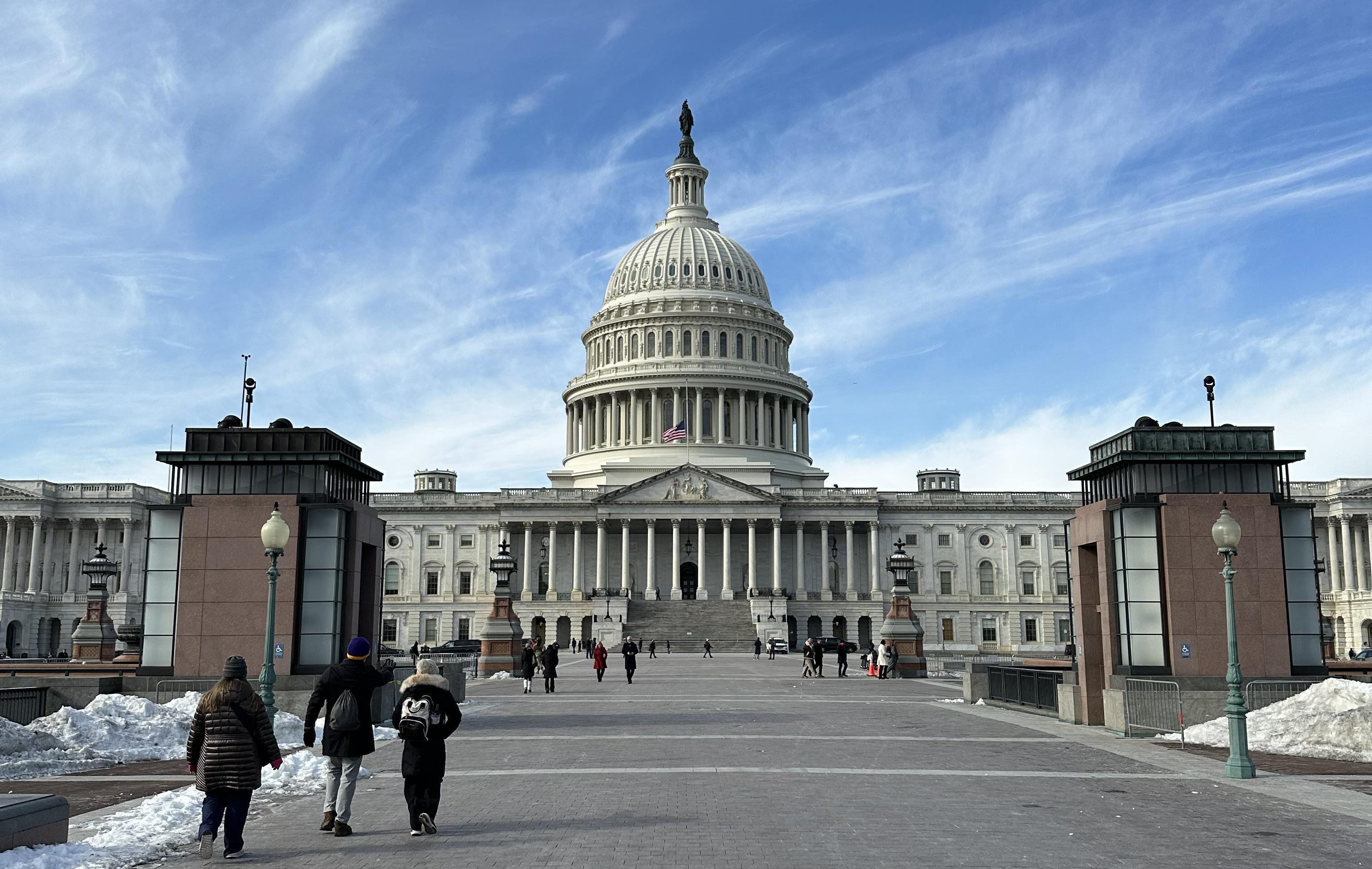
“
“Close Up was a really eye opening experience for me because I was able to not only expand my view on the world, but I was also able to make new friends and connections.”
- Marcus Appleby ’26

“I’ve always had a strong pull of wanting to take action on something when I see injustice, but meeting and talking with others who also wanted to help create solutions to challenges that people across the country face was truly amazing.”
By Julia O’Neill ’26
Over the past school year, Vincent Douglas ’25 has become somewhat of a celebrity around Archbishop Riordan High School. He is well known as DJ Lō, for his telecast shows, Music Minute, and Movie Monday, and is the president of DJ Club.
He’s the kid everyone knows and loves.
- Ellie Jantz ’26
Douglas said he first came up with the character of DJ Lō in 8th grade. He said that DJ Lō is kind of like an alter-ego for him, similar to David Bowie’s Ziggy Stardust.
DJ Lō first joined DJ Club his freshman year, and has been heavily involved since – teaching members how to DJ, DJing for Riordan sports games and for the Saint Cecilia’s festival, where he first premiered the DJ Lō character.
Last school year, Assistant Principal of Student Affairs, Brian

Kelly, reached out to the DJ Club to ask if they could play music over the intercom in the mornings after R-Time, and Douglas jumped at the opportunity. He came up with different genres for different days of the week, like Throwback Thursday and 21st Century Tuesday, and would put the different songs on the R-Time slides. After that, Digital
By Lucas Fernández ’27
Luis Huerta has been the lead custodian for Trinity Service since September of 2023 after having been credit advisor at a bank. He loves his job and puts passion into it.
Huerta said, “My parents taught me to do everything with all my might and to thank God for having what I have.”
He takes care of the majority of the parts in the school in terms of cleaning, coming to school before most arrive and leaving when most students and faculty have already gone home.
“ My parents taught me to do everything with all my might and to thank God for having what I have.
- Luis Huerta, lead custodian
On a regular schedule day, he starts by sweeping the streets that surround the school. Afterwards, he focuses on the cafeteria, especially in cleaning the tables and microwaves to make sure that everything is fine when students get there for lunch; following this, he cleans the windows of the main doors, and in the end he takes out the trash of the late lunch.
Like every other job, there are difficult parts, and in this one is the cleaning of the football stands because of the difficulty of going under them to take out the trash.

People often see that everything is clean, the cafeteria, the hallways, but rarely do people realize the work that has been behind it all.
Huerta feels appreciated at this school because many people notice the work he does and thank him.
“That is why I feel thankful for all the cleaning staff.”
Some students have seen an improvement in the school in terms of cleaning and organization.
Paul Ha ’25 said, “Everything in the school is very clean, especially around the cafeteria. There are a lot of people eating there every day and it is still clean!”
Huerta is definitely one of the hardest working people in the school. Andrew Colville, Director of Facilities, said, “Luis has a great work ethic. He is very thorough with his tasks, and always stays busy. You really can’t ask for much more than that. We are lucky to have him on campus.”
Media instructor Viggen Rassam reached out to DJ Lō, asking if he wanted to do a segment on Telecast instead of the R-Time slides, and Douglas accepted.
“It started off as me just kinda picking songs to play in the morning, and now I get to talk about them. This kinda thing is what I’ve been hoping for since I joined DJ Club,” he said.
“It started off as me just kinda picking songs to play in the morning, and now I get to talk about them. This kinda thing is what I’ve been hoping for since I joined DJ Club.
- Vincent Douglas
’25
As a current senior, DJ Lō said that his main focus at Riordan has been DJ Club, and he hopes that DJ Club will continue the Music Minute segment on Telecast after he graduates. “I really like this experience, and there’s so many people I wanna thank.”
In college, Douglas hopes to continue to DJ and the DJ Lō character. When asked if he had any advice for those interested in DJing at Riordan, he said, “DJ Club will definitely teach you the main skill sets that you need… I went in knowing nothing, and now I can set up the entire deck and play by myself. I know how everything works.”
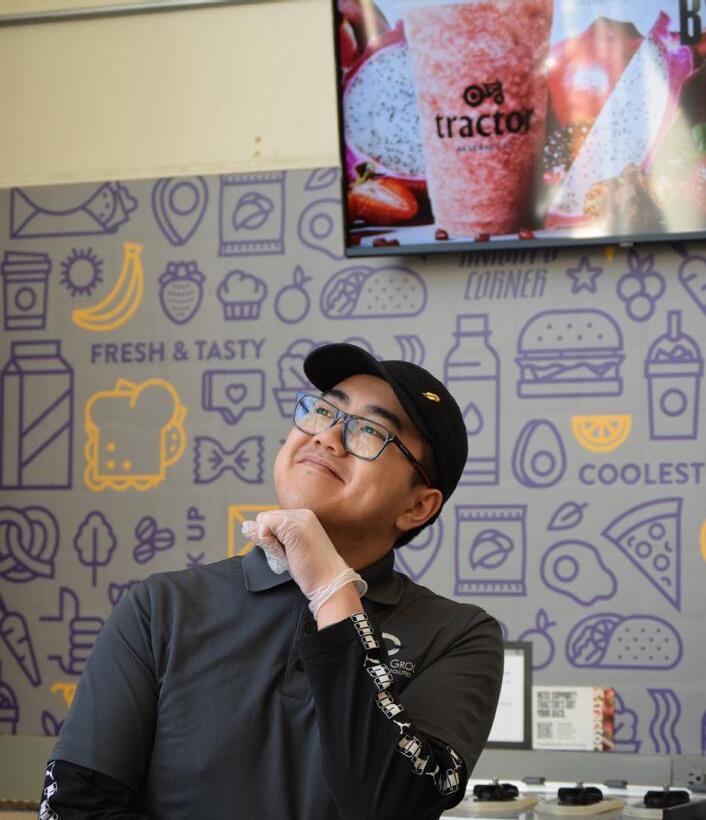
By Evangeline Tonella ’25
Following the switch to CulinArt for the school’s new food program at the beginning of the school year, the company opened a unique juice and slushie bar in the cafeteria, which has been a big hit among students.
What’s also been a hit is Justin the Juice Bar barista himself, with his friendly and easy-going demeanor appealing to many students.
Stop by the Juice Bar in between classes, and you’ll often find a group of students chatting with Justin as he works on their order.
Julia O’Neill ’26 said, “I was really impressed when the juice and slushie bar opened, and I thought it was a really cool addition to the school.”
This new addition offers a healthier alternative for students looking for a sweet drink.
“I go about once a week,” Jacob
Dubriwny ’25 said, following with, “It’s just another option for students who don’t want a soda.”
Blending flavors also adds a fun option for students who just can’t decide on a singular flavor.
“Many students like to mix flavors,” said Justin, who asked for his last name to be omitted.
“Some even ask me to toss in Gatorade or soda which works since sugar doesn’t freeze.”
There is a variety of flavors to choose from, including dragon fruit, orange cardamom, and berry, with mango being the most popular flavor among students, according to Justin.
“Many students like to mix flavors. Some even ask me to toss in Gatorade or soda which works since sugar doesn’t freeze.
- Justin, Juice Bar barista
“I think I would add pineapple,” O’Neill suggested.
The juice and slushie bar is open Monday-Friday nearly all day long for students, teachers, and staff to enjoy a refreshing treat.
To accommodate the changing seasons, it temporarily closed while going through a remodel. Future plans include boba milk tea and açaí bowls. The service will reopen in a few months for a larger group of students and accommodate customers year round.
By Hazel Nagata-Rampata ’26
Shooting for the stars, Jamar Kittling ’20 went from a student at Archbishop Riordan to a student at Stanford University pursuing a PhD in physics.
Kittling attended Riordan from 2016 until 2020, where he was in the Marching Band, National Honors Society, History Bowl, a reporter and an editor for The Crusader, and a part of the Achieve Program.
Kittling was not only just a student of Riordan, but an important part of it as well. Through his work in The Crusader, Kittling made waves through his work as a News Editor.
Susan Sutton, MJE adviser for The Crusader, noted, “From the first day of his freshman year at Riordan, I knew Jamar was destined for greatness. His natural intelligence, amiable personality, and sharp wit made him a standout student in the classroom.”
Throughout his years at Riordan, Kittling said that the school allowed for a change of self, as coming into Riordan, he described himself as “a small kid who wanted to study space because it was cool and didn’t think about much else.”
But after some time, through talking and debating with different students about anything and everything, it allowed Kittling to gain “a strong interest in philosophy and physics as well as astronomy.”
Dean of Academics Diana Assereto described him as, “such a stand up guy. A real quality human. Nice to everyone, very academic, very interested in learning, and just a great student to have as a member of the student
body.”
After graduating Riordan, Kittling attended Wesleyan University in Middletown, Connecticut majoring in Astronomy and Physics. At Wesleyan, Kittling explored the research opportunities available after finding out about the impact original scientific research had on applications for graduate school.
Working with Professor Meredith Hughes, Associate Professor of Astronomy at Wesleyan University, he researched circumstellar disks, which carried into his work in his late-undergraduate work.
“My senior thesis for instance describes how the research group uses radio telescope observations to measure the density structure of debris disks (i.e. evolved circumstellar disks analogous to our solar system’s Asteroid and Kuiper belts).”
In 2024, Kittling was awarded the Littell Prize, which is described by Wesleyan University, as being for students that had “excellence in one or more advanced courses in astronomy.”
After graduating from Wesleyan, Kittling began to pursue a PhD in physics at Stanford University.
Kittling is in his first year at Stanford University and a part of the EDGE (Enhancing Diversity in Graduate Education) Fellowship, which is for doctoral students.
Currently, Kittling is rotating as a first year student, and does not have a main focus or project yet for his PhD. In his rotations, though, he’s worked with Dr. Aaron Roodman, the Professor of Particle Physics and Astrophysics at Stanford, on calibrating a detector for the Vera C. Rubin

By Zoie Lee ’27
Campus safety staff members help make both students and


“Even if you have an academic goal, it’s important to not let it take up your whole life.
- Jamar Kittling ’20
Observatory, and working with Dr. Zeeshan Ashmed, Associate Professor of Particle Physics and Astrophysics at Stanford University on Cosmic Microwave Background (CMB).
Further with the CMB, Kittling noted that, “The idea behind this project is seeing if the largescale distribution of dark matter correlates with the gamma-ray background. If so, it may support theories where dark matter could emit gamma-rays.”
One challenge Kittling commented on for PhD beginners is the responsibilities they had to juggle with a major research focus, then teaching responsibilities, and finally doing classwork.
Don’t be discouraged because of this though, as Kittling advises those interested in pursuing physics to, “focus on getting into a
good college,” and that he “recommend[s] taking lots of AP courses (not necessarily just the science ones), being committed to finding one or two meaningful extracurricular activities (i.e. sports, band, or newspaper), getting into a good college, and finding meaningful internships during the summer.”
Kittling wanted to remind Riordan students that, “even if you have an academic goal, it’s important to not let it take up your whole life. Make sure to have fun in high school while you still can.”
Kittling’s pursuit of a PhD, from Riordan’s breezeway to Stanford’s overarching branches, shows the excellence of hard work, persistence, and leadership.
Sutton said, “His peers always migrated toward him. They valued his opinion and respected his intellect.”
Continuing to use his cosmic determination, Kittling’s work will further establish him as one of Riordan’s many stars.
faculty feel protected and secure around campus. Murphy reported that being a safety campus team member has had many benefits. “I’ve been learning a lot more and coming out of my comfort zone, which I do more now,” he said Brown stated, “My day-to-day responsibilities include checking in on football players in class, making sure they have food, and are behaving themselves in their classes.”
Brown added that the most challenging part of being a campus safety member is having to remind students of the safety protocols and being constantly alert of the protocols.
Campus safety members are often seen carrying a yellow pouch across their body, which holds a convenient first aid kit for emergencies and a walkie talkie for fast communication between
other members of the safety crew.
Kilgariff noted that the biggest difference from his time when he was a student to his time now as part of the faculty is Riordan’s change to coed.
He remarked, “I think the change from all boys to coed has really helped with bringing out the school spirit.”
Kilgariff said, “So far, being a part of the safety team has been good as I’m getting to work at a place that is special to me.”
Not only is Kilgariff a part of the campus safety team, but he has also worked in the RSP program as a teacher aide and a member of the cross country and track and field program here at Riordan as a coach.
Although Brown did not attend Riordan, he feels the strong honor and pride it is to be a part of the Riordan community.
By Nicole Diaz ’26
Released on Jan. 26, 2019, “The Last Black Man in San Francisco,” starring Riordan alumnus Jimmie Fails ’12, conveys an evocative portrayal of gentrification and its immense consequences on the ethnic minorities of San Francisco.
In the film, Jimmie is going through a rough time trying to accept the fact that his old house does not belong to his family anymore. Living in the Bayview with his best friend Montgomery, Jimmie never loses hope that one day he will get his old house back.
Jimmie’s house was built by his grandfather who first arrived in San Francisco in 1946. According to the film’s narrative, his grandfather was the first Black man to arrive in San Francisco.
Today, ethnic minorities like African Americans and Latinos are no longer living in districts where those communities once flourished like Potrero Hill and Fillmore. This is all thanks to gentrification.
English teacher, Brian Kosewic ’16 said, “I think that the communities that have come to San Francisco have played important roles in shaping San Francisco, but at the same time have the most roadblocks and obstacles that have come in
between their success.”
To elaborate on the examples of these roadblocks, Kosewic added, “Banks and the federal government purposefully chose not to invest in certain neighborhoods that they deemed undesirable…”
He added, “I think now as events like the ‘tech boom’ have started bringing an influx of money to San Francisco…those poorer and under-resourced neighborhoods are the first who are starting to lose a hold on their neighborhoods.”
San Francisco is known as one of the most diverse cities in the world because of the efforts of people coming together in hopes of a better life. It is movies like this that remind people just how lucky they are to live here and that they cannot take it for granted.
“I think gentrification is one of the biggest problems here in SF. It is also a very sad situation that many go through. Many people lose not just their homes, but their memories. It must be terribly difficult seeing your home changed into a factory or something along those lines,” expressed Jackie Gámez ’26.
When the movie was released six years ago, Fails told The Guardian in an interview, “It’s about coming together, the real

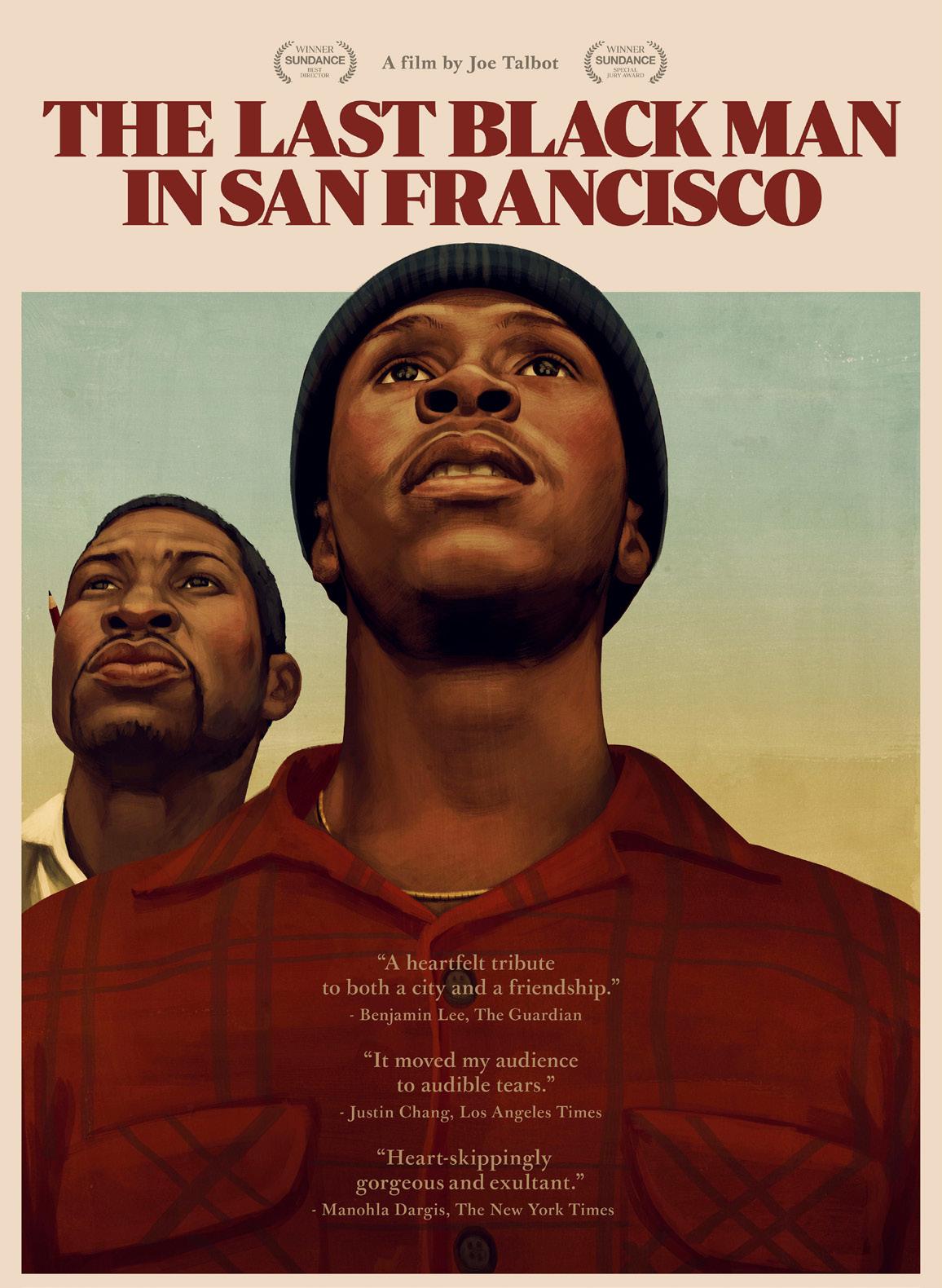
By A24 Films
San Franciscans who are still there,” said Fails.
“Creating one voice to represent everyone. You can fight back with
art, that worked for them in the ’60s. But only because they banded together and had that community feeling. That’s the way to do it.”
By Andres Roca ’25
Riordan’s Kevin Carranceja ’21, better known as Karri, is creating a splash in the R&B scene as he begins to make his name known as one the biggest upcoming singers.
Graduating in 2021, Karri was part of one of the last classes to experience the brotherhood, having an all-boys Riordan experience for most of his time on campus.
“It definitely built the foundation for how I moved,” Karri said. “All the teachers and counselors… always showed me love and I was really appreciated.”
His lasting impact on the Riordan community persists today. Matvey Kalachev ’25 is one of the many modern artists at Riordan who has the potential to be the next big hit. Kalachev, who makes music under the alias Mat, credits lots of his inspiration to Karri.
“Karri has been an inspiration throughout my own personal journey making music. I would look up to him as an artist who comes from the Bay Area, especially from Riordan,” stated Kalachev.
Antonio Dominguez ’25 attended
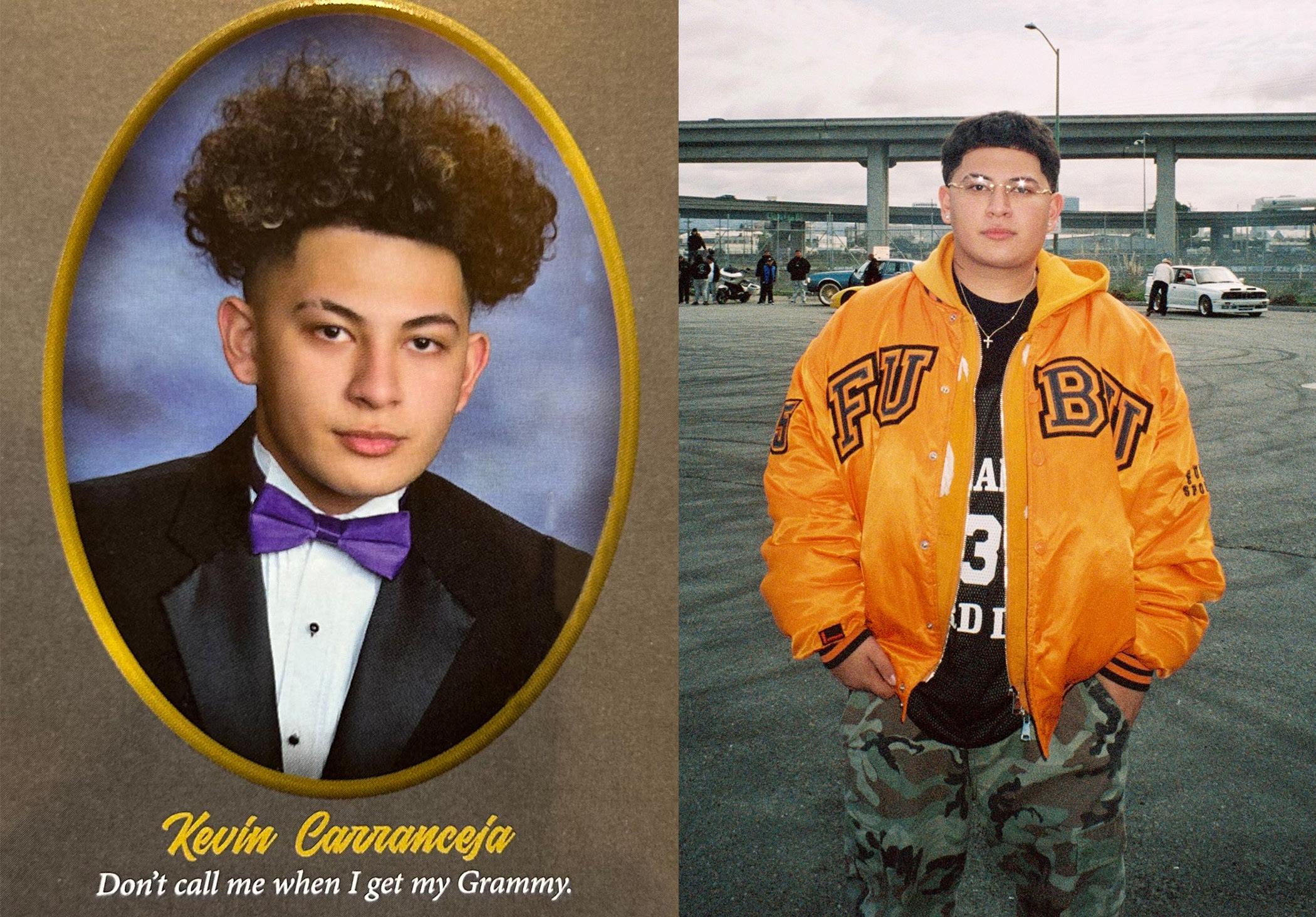
’21 is on the pathway to success with his R&B music career under the stage name Karri.
both of Karri’s alma maters, Riordan and Saint Thomas More School. He greatly admires Karri and resonates with his success.
“Knowing Karri since middle school and also high school makes me feel proud that I was able to be around and go to the same schools as him because he has cemented himself in the music industry and made it a long way in such a short time.”
Initially bursting onto the scene in 2018, Karri first co-signed with fellow Bay Area artist Bankrol Hayden under the record label Bankrol Records.
Karri’s first true taste of success came in 2023 from his single, “3AM in Oakland.” With its soothing vocals and beat, combined with its resonation within Bay Area culture, it was a hit. The song especially found
success on social media where it garnered thousands of videos.
His talents eventually reached the likes of artists like Drake and Lil Baby who helped Karri seize the opportunity by co-signing him to one of Drake’s closest constituents, Chubb and his PFL records.
“You know growing up, that being my favorite artist, it’s kind of crazy, him showing me love,” Karri remarked when speaking on what it’s like working with Drake.
Under this new record label, Karri has continued to accumulate success by releasing his full EP, “Late Night Slider Music.” Karri officially won his first accolade by being named Billboard’s R&B Rookie of the Month for January 2025.
Even after his time at Riordan, Karri continues to live out what he believes it means to be a Crusader.
“The brotherhood man…just showing love everywhere,” he expressed.
By embodying the core values of family and love, Riordan alumnus Kevin Carranceja’s music reverberates in the R&B industry under the name Karri.
By Daniela Krasnoshchok ’25
In the past two months, the public has seen a rapid increase in egg prices, with San Francisco experiencing a dramatic change in costs. The most significant cause is the bird flu outbreak.
The avian influenza virus, also known as bird flu, has been spreading globally, affecting the stock of eggs, farms, and chicken populations. It only takes one contact with contaminated surfaces for chickens in the same environment to become infected and sick.
“Systems where chickens are raised and killed are dirty and muddy, it’s not a surprise it [bird flu] spreads so fast,” said Jack Reardon, chemistry teacher at Archbishop Riordan High School.
According to the Centers for Disease Control and Prevention, the spread of the virus resulted in the loss of millions egg-laying hens in this short amount of time.
“It impacts the industry and chickens’ lives in general. The chickens who are more resistant to it are going to survive. It is natural artificial selection,” said Reardon.
Local clubs and grocery stores are affected by avian influenza. Egg prices doubled with a supply
shortage. Riordan’s Cooking Club is experiencing hardship, making it difficult to plan their fundraising food menu, which includes noodles with egg ingredients.
“It’s made our ingredients cost much more,” said Brian Davis, Business teacher and moderator of the Cooking Club.
Davis added, “The initial factor regarding the increase in egg prices was the overall rate of inflation. Egg prices have continued to increase faster than the rate of inflation recently due to bird flu. This is a straight forward supply and demand model where we have taken chickens out of production and hence have created scarcity in the market substantially decreasing the supply of eggs and hence increasing egg prices.”
According to CBS News, the average price of a dozen eggs has gone up 14 percent since November 2024. This has created difficulty for local businesses and bakeries, where eggs are a crucial food item.
The desperation was evident to San Francisco resident Rhonda Hontalas who was shopping at Costco with her husband and turned around to find that
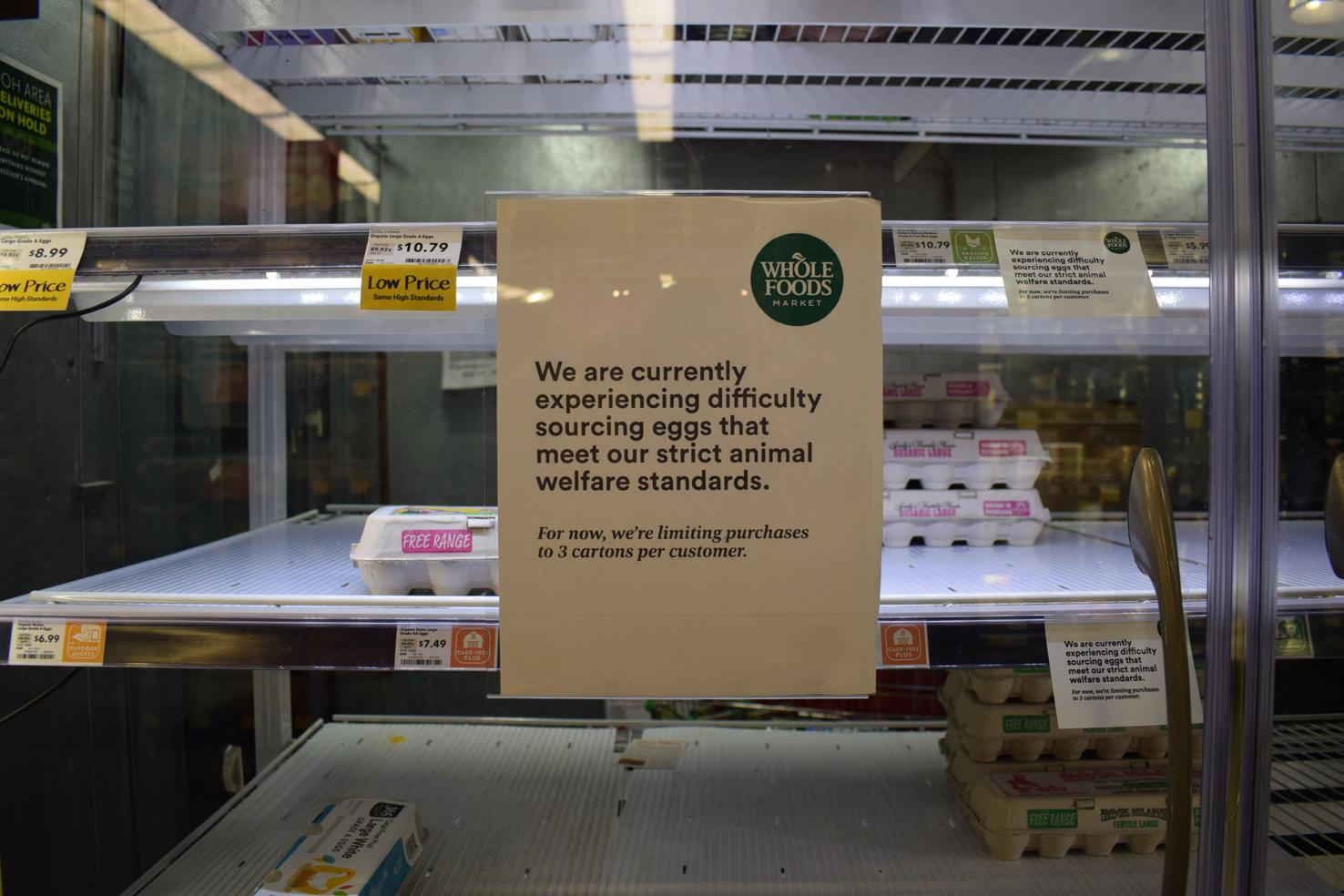
someone had swiped the eggs right out of her shopping cart.
She described the incident as, “Trying times, both scary and sad. It’s supply and demand, similar to toilet paper in 2020.”
The bird flu issue is surprisingly well known among the student body. Some said it did not affect their household, while others said they used egg alternatives or egg whites because of the health scare.
Students and the community should be aware of recent changes
to prevent the virus spreading so they can be conscious of the consequences.
Patrick Cistaro ’26, member of the Business Club, gave an insightful look on how the community can educate themselves on this problem, sharing that he is, “researching immensely about the inflation which affects egg prices and teaching myself more about economic change due to bird flu, and how the price of eggs has affected businesses tremendously.”
By Lorelai Keating-Curran ’27
Throughout history, African American medical pioneers have played a key role in transforming healthcare, improving access, and advancing medical knowledge. It is key to have representation from all cultural groups to ensure medical advancements benefit everyone, and these medical providers show the importance of having cultural representation to ensure medical equity.
Dr. Charles Drew revolutionized the field of blood transfusions. His pioneering work in blood plasma storage and preservation led to the development of blood banks, which have saved millions of lives. Despite facing discrimination, Dr. Drew advocated for equitable medical practices, ensuring lifesaving blood donations were available to all.
Madison Avila ’27 stated, “Prioritizing equity over equality is important because giving equity is giving everyone the same thing but that won’t help everybody as some people have less, so equality is giving people what they need to be successful.”
Dr. Patricia Bath pioneered laser cataract surgery, a procedure that has restored countless individuals’ vision worldwide. She was also the first African American woman to receive a medical patent. Dr. Bath’s dedication to eliminating health disparities worldwide

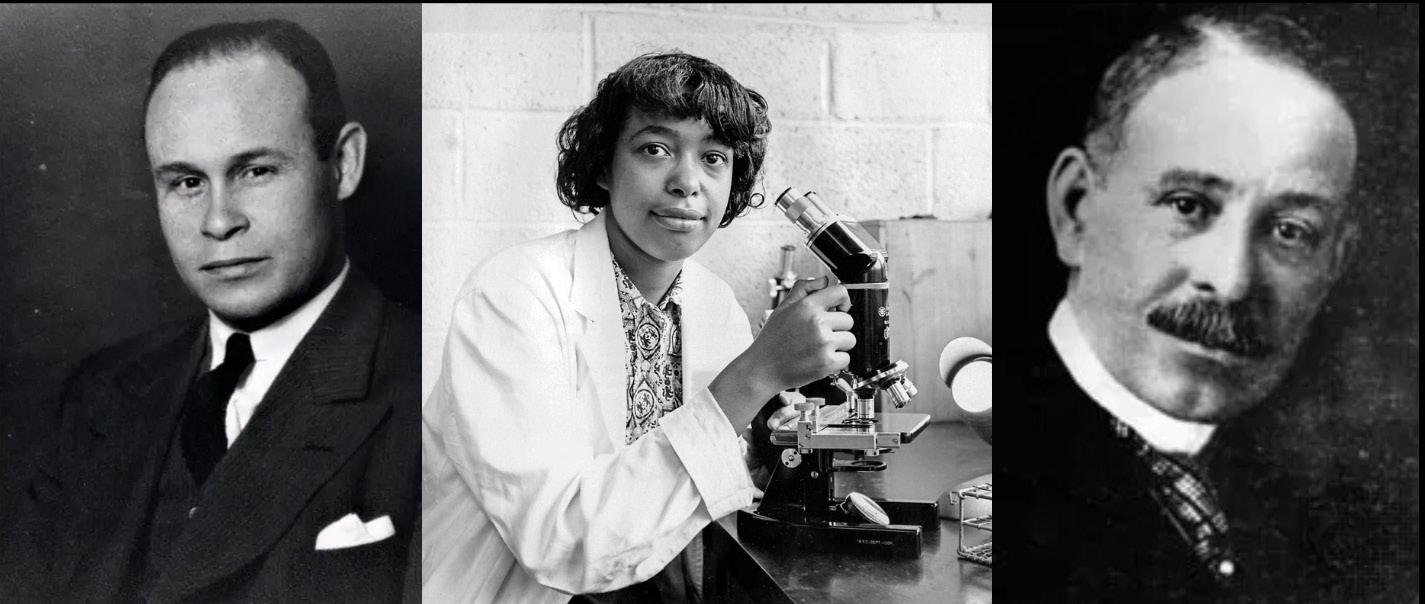
emphasizes the importance of making medical advancements available to everyone.
Chemistry teacher Julia StrickerBalistreri said, “There have been advancements made in regards to imaging that allows for clearer images in people with darker skin tones. Imaging is used for a variety of diagnoses such as tumors or just for looking at various organs, arteries, etc, and with darker skin tones absorbing more light, the images would be blurry.”
Thus, medical advancements in imaging for all skin tones improve life expectancies across the world.
Dr. Daniel Hale Williams performed one of the first successful open-heart surgeries in
“Prioritizing equity over equality is important because giving equity is giving everyone the same thing but that won’t help everybody as some people have less, so equality is giving people what they need to be successful.
- Madison Avila ’27
1893. He also founded Provident Hospital, the first Black-owned hospital in the United States, creating a foundation for inclusive healthcare.
Whitney Smith, an African American nurse shared her insights on these medical pioneers. “Through embodying cultural competency, we must
also implement diversifying the healthcare workforce, community engagement initiatives, and addressing historical mistrust through open dialogue.”
These pioneers’ achievements exemplify resilience and innovation, ensuring continued progress in the medical field and equitable healthcare for all.
By Ciarra Mangibuyat ’27
The community of BayviewHunters Point has faced poverty and industrial pollution for decades. Originally established in 1870 as a commercial shipyard, it was later purchased in 1937 by the US Navy to build naval ships, which emits black carbon and may release oil, lead, and mercury. This led to the exposure of harmful chemicals and pollutants to the residents of the neighborhood, according to kqed.org.
During the Second Great Migration from 1940-1970, African Americans were promised jobs in Bayview and many came from all over the United States. As more and more arrived, the area seemed to be transitioning into a predominantly Black neighborhood.
Following WWII, the area was used as a place to decommission hazardous and radioactive ships. Some of the radionuclides that were a part of the contamination were identified years later as plutonium-239, strontium-90, and cesium-137. Other contaminants include mercury and lead.
AP Environmental Sciences teacher Michael O’Brien stated, “Being exposed to any kind of harmful radioactivity, you are at the risk of at least skin cancer, if not other cellular abnormalities and cancers.”
O’Brien continued, “If the radioactive material is buried in the ground, depending on how deeply, we are relatively safe. But again, if that radioactive material comes in contact with any kind of water distribution, we could have issues with that.”
In 1989, the Bayview shipyard was appointed as a “superfund” site. To this day, the US Navy is still in the process of fulfilling a cleanup, despite the chemicals lingering in the area for decades already.
According to the Urban Institute, “Environmental racism in the San Francisco Bay Area has disproportionately harmed residents of color for decades. In all of San Francisco, the Bayview Hunters Point community has the highest mortality rates, the lowest life expectancies, and above-average rates of ER visits, hospitalizations, cancer, and asthma.”
“The problem with environmental racism is that nobody is taking action towards it,” said English teacher Michael Vezzali-Pascual ’88, who attends church at St. Paul of the Shipwreck in the Bayview. Many residents have concerns for their community and environment of Bayview. The number of asthma cases in Bayview is much higher compared to other neighborhoods


in San Francisco. The pollution is not only affecting humans, but also the animals that live in the area, such as dogs. This pollution is detrimental to their health and can cause illnesses to occur.
According to the California Air Resources Board, “Residents of this community have lower life expectancies and higher mortality rates from lung diseases, which can be partially attributed to constant exposure to air pollution. This community has a higher rate of asthma-related emergency room visits and cardiovascular disease than most of California.”
Bayview resident Derrill Floyd ’27 said, “I am concerned for my
health sometimes and also that a lot of the animals eat the trash that is left behind.”
After three decades of suffering, officials have recently announced a new plan to start an underwater cleanup focusing mainly on disposing of lead, mercury, copper, and polychlorinated biphenyls.
However, this $30 million plan cannot take place until 2027 because the US Navy is still deciding how to initiate this. They are unsure of where to dispose of the waste.
Residents of Bayview-Hunters Point hope to someday live in a clear and safe environment, but their future is uncertain.
By Rose Baik ’26

A
on
Alone with the stars in the sky, they move in the shadows. When it’s nightfall, their lean figure, umber colored eyes, and bushy tail comes to life as these mysterious creatures start roaming around the neighborhood. They make their presence known throughout the night with an echoing howl.
Once a rare sighting, coyotes have become a hot issue as Area. According to city data,
more observations of them have been reported in the Bay Area. According to city data, approximately 600 coyote sightings have been reported to San Francisco Animal Care and Control last year. This year, it is expected to rise up to 800.
One of the key reasons why coyote rates have increased is due to urbanization. As their natural habitat is intruded upon and
urbanized, coyotes simply have nowhere else to go but to the city. Furthermore, urbanization leads to an increase in domestic waste, which attracts scavengers such as coyotes and rodents.
“Communities can work to modify coyote habitats by removing potential shelters or food sources, such as overgrown areas or accessible trash bins... providing information on coyote behavior and safety precautions will help people understand how to coexist with wildlife,” stated Juvenal Orozco ’26.
Can coyotes and humans coexist?
Although there haven’t been many reports of coyote attacks on humans, they are inclined to have an eye on another creature with four legs and a tail. “[If I see a coyote] I’d first let my dog back in my house,” commented Claude Garde ’26.
Coyotes may mistake unattended dogs as prey and larger dogs as a threat to their territory. It is important to always be aware of your surroundings and to put your furry pals on a leash at all times.
According to the Golden Gate National Recreation Area, three dogs were killed by coyotes at Crissy Field in September of 2024.

Other deaths were reported, but could not be verified.
“I’m worried that they are going to get run over or someone is going to try to do harm to them so I hope they stick to the woods,” said Katherine Baez ’26.
Instead of seeing coyotes as a threat, it is also crucial to acknowledge their role in the ecosystem. “They can definitely help eliminate infestation species,” said Jessica Cheung ’26. Native predators such as coyotes help eliminate rodents. They also regulate populations of skunks, raccoons, and foxes, which contributes to boosting biodiversity.
Some say coyotes haven’t intruded our land, humans intruded on theirs. They are simply trying to survive. Therefore, the real question is not how to eradicate them, but how to live with them.
By Miles Witte ’27
In early January, several MIT affiliates were awarded one of the most prestigious science awards, the National Medal for Science and Technology. Among these renowned scientists was Dr. Paula Hammond, a professor of chemical engineering at Massachusetts Institute of Technology, who was the first woman of color to serve as the head of the chemical engineering department.
With over 40 awards, medals, and honors, Dr. Hammond has had an extremely successful career in chemical engineering. But what motivated Dr. Hammond to pursue a career in the chemical science field?
In an interview with Dr. Hammond, she said, “My parents were both involved in public health, and for that reason I was always encouraged to explore science, math, as well as all of the broader fields of social and physical sciences.” She added, “I got really excited about being able to make something new by combining two different things together.”
Now, Dr. Hammond has transitioned from being taught chemistry to teaching chemistry to her students at M.I.T, returning as an associate professor in 1995, and becoming an institute professor in 2021.
Outside of the classroom, Dr. Hammond has made several innovations in chemical engineering. Her most famous invention was layer-by-layer
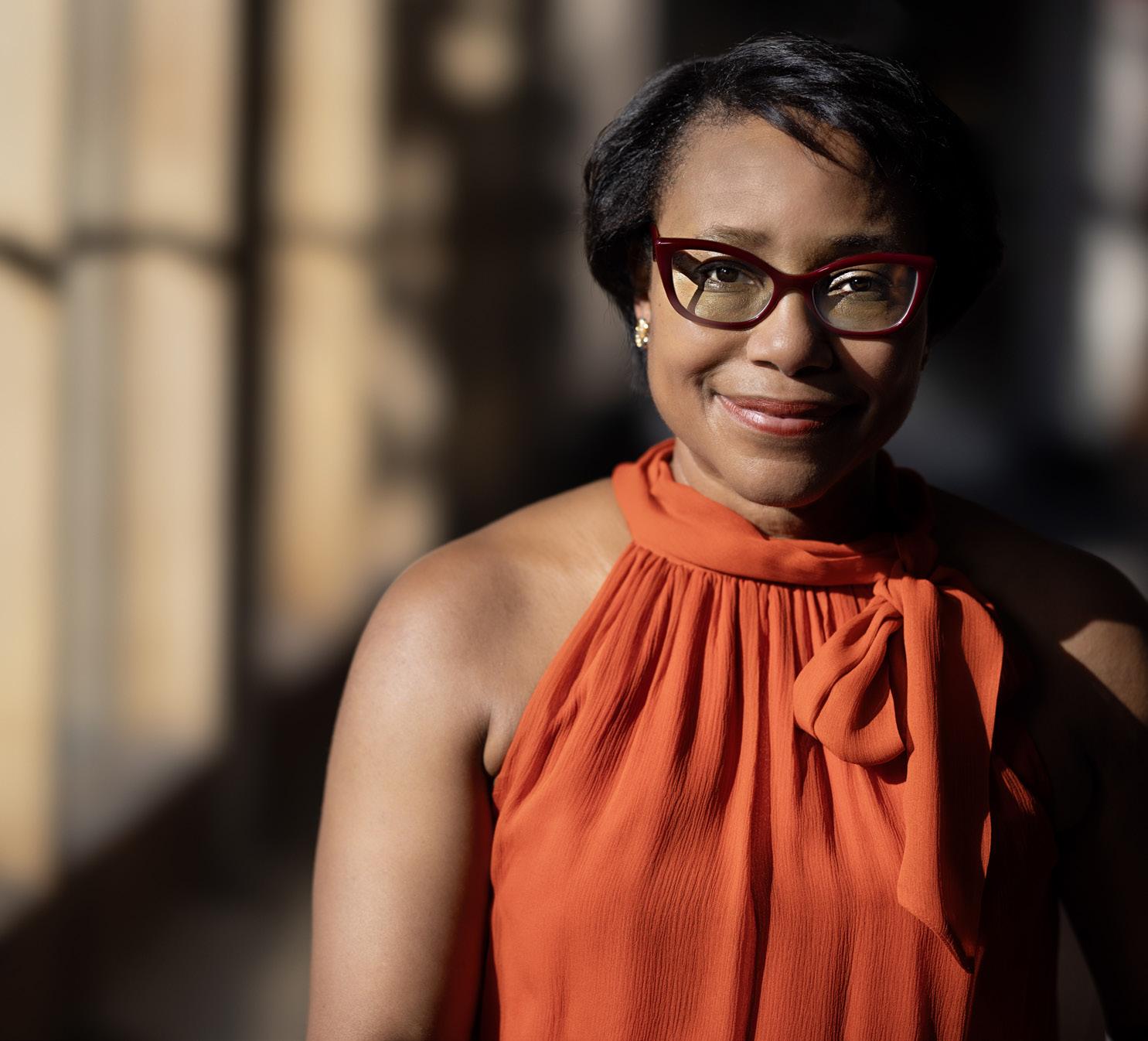
adding that “I hope that her work inspires all girls to pursue science research as a career.”
Riordan Biomedical student Zion McGuire ’26 further added, “I think her achievements are going to inspire people, especially young Black girls, to be interested in STEM,” and that Dr. Hammond is “a role model for girls in general who are interested in science.”
Despite all of her prior achievements, Dr. Hammond is just getting started. “I am excited about the use of AI and patient data to inform the design of nanomaterials to address cancer and other diseases, combining experimental efforts and largescale experiments with machine learning,” she said.

assembly technique to build ultrathin batteries and fuel cell electrodes.
In terms of biomedical creations, Dr. Hammond’s drug-delivery tactic through nanotechnology is renowned in the scientific world. Although many first think of nanotechnology as a product of cinema, Dr. Hammond has utilized very real nano-coated cells to distribute vaccines to specific cells, helping combat diseases such as cancer.
Former pharmaceutical senior
investigator and Riordan AP Chemistry teacher Dr. Caroline Gochoco-Tsuyuki likened the technology to a “Trojan horse,” as the nanoparticles bind to receptors on cancer cells while remaining undetected by immune processes that target conventional medicine, after which the particle is “engulfed by the cancer cell” and releases its cytotoxic payload, killing the cancerous cell.
Dr. Gochoco-Tsuyuki described Hammond’s work as “genius” and that of “a true “STEMnist,”
With many innovations already, and future inventions forthcoming, Dr. Hammond continues to strive to help the world through her scientific breakthroughs while recognizing her racial background, stating that “in cancer, I’ve had a strong interest in ovarian cancer, a cancer that impacts women significantly. It’s also a cancer that hasn’t been resolved. In fact, we haven’t seen much improvement over the last few decades and it impacts Black women especially.”
And for any aspiring scientists, she said, “I’d say expose yourself as much as possible, check things out, read, look for opportunities to learn more about different fields, and delve as deeply as you can into those fields to see if that’s something you want to do, too.”
By Malcolm Jones-Smith ’25
When people think of squirrels, most of the time they perceive them as amiable happy-go-lucky creatures of the Earth–or a dog’s worst enemy.
However, researchers at UC Davis and the University of Wisconsin-Eau Claire have discovered recent changes in the diet of the innocuous California Ground Squirrel. Instead of just acorns, they have developed a taste for something else: Voles.
In the summer of 2024, during a longer-term study on squirrel population at Briones Regional Park in Contra Costa County, researchers from UC Davis observed 74 interactions between squirrels and voles, with 42 percent ending in the act of squirrels hunting the small rodents. This was especially surprising given documentation occurred in only a two-month interval between June and July of 2024.
For as long as they have been studied, squirrels’ diets have primarily comprised nuts, seeds, and vegetables, with the occasional insect. This introduces the question as to what caused this dramatic change in the squirrels’ diet.
Coauthor Sonja Wild said in
an article from the UC Davis College of Agricultural and Environmental Sciences, “I could barely believe my eyes,” but that “Once we started looking, we saw it everywhere.”
While squirrels have been noted to rarely engage in infanticide and hunt smaller animals in prior studies, the frequency in the 2024 paper far exceeds any previous work. Whereas the authors note only 16 unambiguous records of squirrels predating small birds and mammals between 1940 and 2020, the 2024 study found 31 instances of predation on voles, suggesting this behavior may be more common than previously thought.
Another compelling facet of this study is that the research method the team at UC Davis supplemented their data utilizing the app iNaturalist, which is a citizen app used to document biodiversity around the world.
Science Teacher Jack Reardon described iNaturalist as a “very useful tool because it lets us see species that we interact with on a daily basis,” adding that it’s “a great tool for learning about ecology as well as naturalistic research and the scientific method.”
The study proposes that
this dietary adjustment is a consequence of a relative increase in the local vole population, as documented through iNaturalist, and that the squirrels were opportunistically exploiting an increase in a novel food source.
Diego Gomez ’25 further speculated, “In my opinion, one of the main causes of that may be the pesticides gardeners have been putting in the plants. Not only to stop weeds, but they also have been killing off plants.”
Additionally, predation was most common in areas of high squirrel density rather than areas of high vole density, and squirrels were observed competing over vole carcasses, which the study attributes to the relatively much higher nutrition voles provide relative to their conventional food sources.
The study further concludes that given how prolific vole predation was in the sampled population, coupled with the aforementioned handful of earlier reports killing small animals, that squirrels may be genetically predisposed to circumstantially engage in carnivory, rather than this being a learned behavior.
Furthermore, this suggests that ground squirrels are far more dietarily flexible than

New research concludes ground squirrels may predate other rodents.
previously believed, with the authors suggesting they would be better characterized as opportunistic omnivores, rather than the traditional label of strict granivores.
This demonstrates an often unappreciated degree of adaptability and nuance among even the most ostensibly mundane wildlife, and that even the ordinary can defy expectation.
By Ishaan Gupta ’26
The story of Burl Toler is one of perseverance as his accomplishments in football paved a path for future generations.
One day, Toler was outside playing basketball when one of the football coaches from the City College of San Francisco came up to him and asked him to get on the field to tackle the team’s best running back, Ollie Matson, and he tackled him on his third try. They became best friends.
Later, he transferred to the University of San Francisco where the team went an undefeated 9-0. The team was selected to go to a bowl game only if they left Toler and Matson behind.
Burl Toler’s son, Martel Toler, said, “Back then, the bowl game was in the South, and the whole team said, ‘If our two players, Ollie and Burl can’t come, we’re not going’.”
Toler was drafted in the 9th round but before he got to play in the NFL, a knee injury in a college all star game ended his career.
Despite this setback, Toler was still determined to make his way to the NFL through another way: officiating.
His career started when he officiated college games. In 1965, his career as an NFL official started when he was hired as a
By
On Feb. 15, the Riordan Varsity baseball team recorded their first win of the season, a 17-7 victory, as the team hosted over 130 people at the annual alumni baseball game.
“It’s been wishy washy for a long time and me being the head coach here now that’s something I want to make sure happens every year,” said head baseball coach Craig Sargent.
In addition to the alumni, students, and families, several other student groups were involved including DJ Club and BBQ Club to support the alumni and varsity baseball team.
“I love that outside groups can pitch in to support and hope we continue to collaborate to get students involved and maybe learn about something that never thought they’d be interested in,” said Director of Boarding Program David Lin ’99.
As a result of the team’s overall performance throughout the past few years, Sargent said there are no major expectations. “They haven’t won a league game in two years here, since 2019 they are 2 and 72 in league, so expectations are . . . there’s not a lot there.”
But he still feels hopeful for the future, saying, “If we don’t win we’re in big trouble, but that
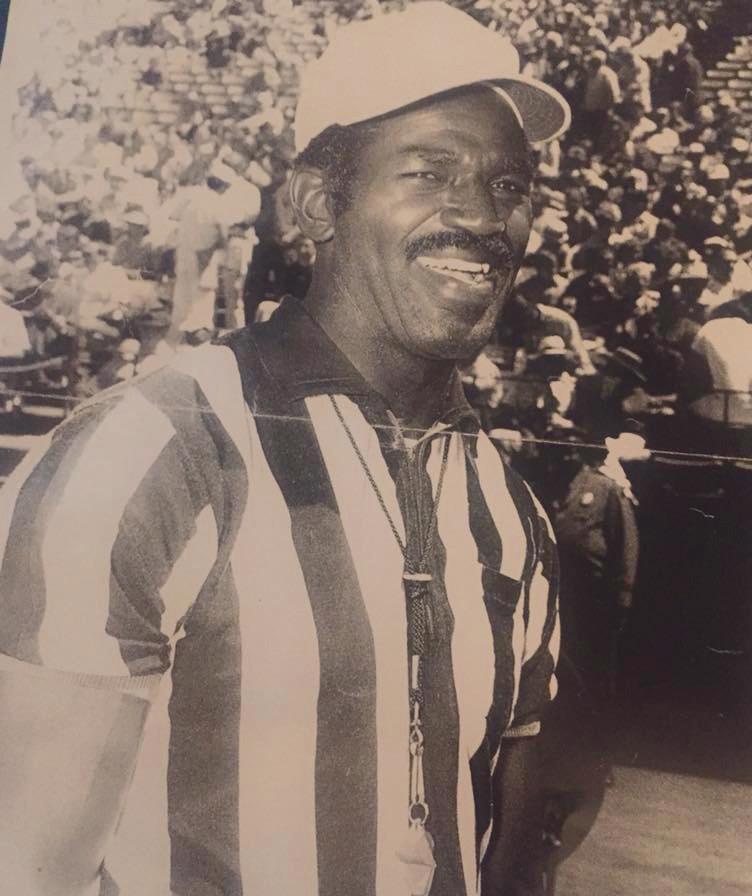
Scott Chisea, Track and Field coach, said, “He had a tremendous impact, not just in sports but in history, even in the world that rejected him, and he still came back and broke barriers.”
Additionally, he was on the Board of Trustees at USF from 1987 to 1989 and was a game observer for the NFL for eight years.
Aiden De Souza ’26 said, “He was a role model for the kids he coached and helped the next generation become passionate about sports.”

head linesman. This made him the first African American official in any major professional sports league.
Martel said, “He (Toler) said if he has a chance to become the first that he knows that he would not have been the last.”
He officiated in the NFL for 25 years, including officiating Super Bowl XIV in 1980, and the 1982 AFC Championship Game also known as the “Freezer Bowl” due
to the game being played at -9 degrees with a wind chill of -59 degrees.
After his officiating career, he worked at San Francisco’s Benjamin Franklin Middle School as a teacher, coach, counselor, and principal. He was the first African-American secondary school principal in the Bay Area. The school closed in 2006 and reopened as the Burl A. Toler Campus.
In 2008, he was inducted in the Bay Area Sports Hall Fame. Toler died in August of 2009. His legacy and impact on football is one that is still felt today and will be remembered for generations.
Martel said, “He was a man of many sayings, but he always said, ‘show me a person that has not made a mistake, and I’ll show you a person that’s never made a decision’.”
He continued, “He was always a pioneer and you know even to this day, when I drive around San Francisco, I see buildings, whether it’s at USF that bear his name . . . [and at] Franklin, now changed to the Burl Toler Campus. So, yeah, he still continues to inspire me, and I’m sure other people will see him and know his story.”

shouldn’t be a problem.”
Because of the current coaches and students engaged in the program, Coach Sargent remains positive about the team’s future performance and correctly predicted that the current varsity team would win by 10 or more runs against the alumni team.
“The results are about right. Young high school sophomores through seniors should be shellacking a bunch of old washed up alumni,” said Lin.
I love that outside groups can pitch in to support and hope we continue to collaborate to get students involved and maybe learn about something that never thought they’d be interested in.”
- David Lin ’99
Although there have been many changes in Riordan athletics throughout the years, students today share the same bonds with alumni whether they graduated last year or 20 years ago.
Lin added, “All schools have a sense of some kind of community, naturally people gather together, but what’s exclusive to Riordan I think is the realness and genuine love we have for the relationships and opportunities Riordan offered to us.”
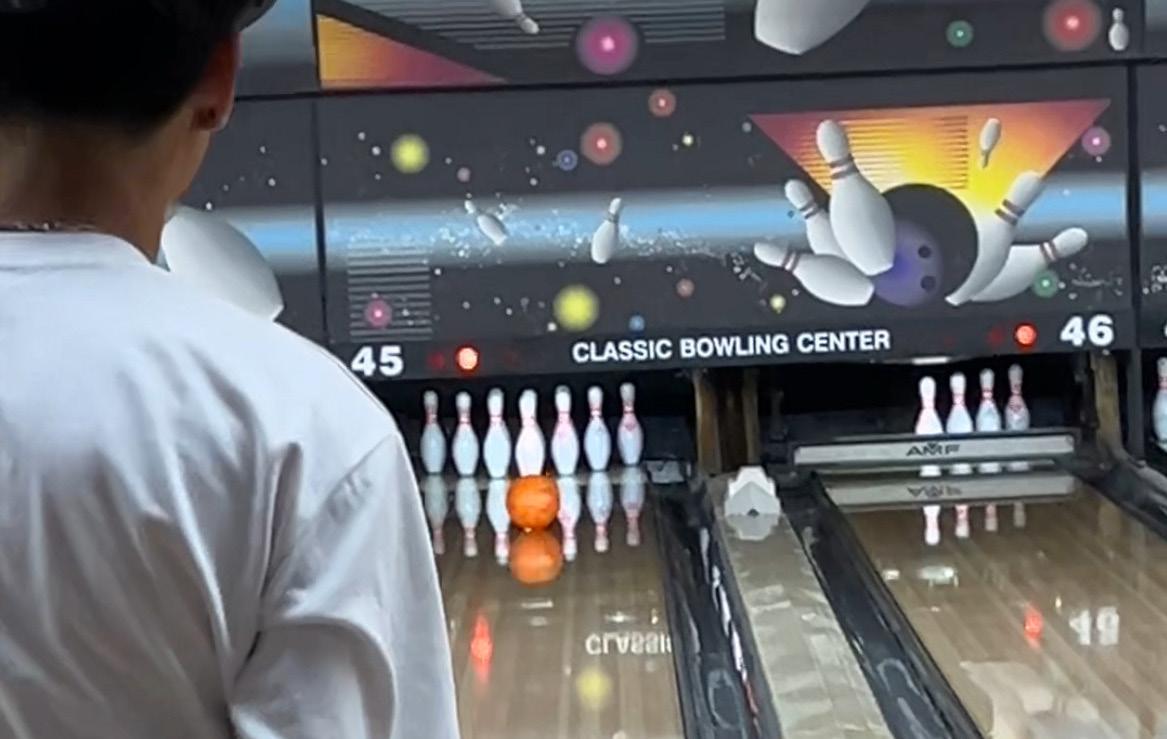
By Emilio Rocha ’25
Riordan, already having a diverse, loving, involved community full of sports, clubs, and academics, is continuously making new activities that allow students to express their own interests in the best way possible.
One of these new activities is the sports club of bowling, which was created by three students in the hopes of adding onto the embracing, loving culture of Riordan.
The Bowling Club is one of the newest sports clubs added to Riordan, and requires an extreme amount of patience and precision. That being said, the Bowling Club, one of the most popular sports in the world, is a new,
uprising activity that emerged because groups of students are ready to share their passionate love of the sport with the entire student body.
Aiming to foster a similar kind of liking of the sport with their group members, the leaders take initiative in mentoring students with their form and knowledge of the many technical aspects of the sport, not only making them better bowlers in general, but more involving people in the community of Riordan.
Riley Alfonso ’25, a member and leader of the Bowling Club, stated, “We accept all skill levels, whether you are an avid league bowler or have to turn on bumpers.”
He continued, We offer a fun community of eager athletes who are ready to achieve higher scores.”
Although the club is still planning their future activities, they hope to get as many students as possible out onto lanes to share a compelling, team building event. Furthermore, as the team continues to plan their future events, they currently do not play competitive games. However, the hope is that the club’s future will rely on the participation of competitive tournaments against other schools, establishing a proper Riordan reign across the sport of bowling.
Despite already being a relatively niche sport that has been around for years, it can also be seen as a mind reliever for many, as it is a low-risk activity that reduces stress levels. Whether it is through the focus of aiming, the improvement of handeye coordination, the development of balance and flexibility, or the constant repetitive motion, it is truly a meditative sport full of precision and patience.
“We don’t strive for perfection, we strive for fun and relaxation,” Benjamin Jang ’25 said, a leader of the Bowling Club.
The two leaders of this club, Jang and Benjamin Kunin ’25, along with the assistance of Alfonso, strive to make students
agile and fervid to improve their skills, while also allowing them to be a part of a fun, involving a supportive community.
Hoping to share their love for the sport with the entire Riordan student body, this club is one of many comprising communities that the school has to offer, building a group with not only a common interest in bowling, but an interest that allows them to express themselves freely without having to feel the pressure of being judged.
Neel Parekh ’25, a member of the club, said, “Striking is easy for me now!”
Whether it is acting as a mental health break, to a fun, relaxing game with friends and peers, the sport of bowling, more specifically, the Bowling Club, truly has something to offer to everyone, with or without experience.
Alfonso said, “Getting students active, eager to improve their skills, and being part of a fun community are ways our club positively and continuously impacts students all around.”
This is a very exciting opportunity and opens the doors for other less popular sports to get recognized through diverse clubs. The Bowling Club continues to grow and with each roll of the ball, members sharpen their skills and also build friendships that go beyond the lane.
By Liam O’Connor ’25
On Feb. 9, the Philadelphia Eagles soared to their second Super Bowl victory, dismantling the Kansas City Chiefs 40-22 at the Superdome in New Orleans. The win denied the Chiefs a historic three-peat and marked a moment of redemption for the Eagles, who had fallen to Kansas City in the Super Bowl just two years prior.
From the opening whistle, the Eagles imposed their will, with quarterback Jalen Hurts leading a seven-play, 69-yard drive that ended in his own 1-yard touchdown run. Hurts delivered a great performance, completing 17 of 22 passes for 221 yards and accounting for three touchdowns; two through the air and one on the ground. This performance won him the Super Bowl MVP.
“I think he proved that he is a top five quarterback in the NFL,” said Ethan Situ ’25.
The Eagles’ defense, led by former 49ers defensive coordinator Vic Fangio, was the true gamechanger. Exploiting Kansas City’s biggest weakness—the offensive line—the Eagles’ relentless pass rush made life miserable for Patrick Mahomes. The Chiefs’
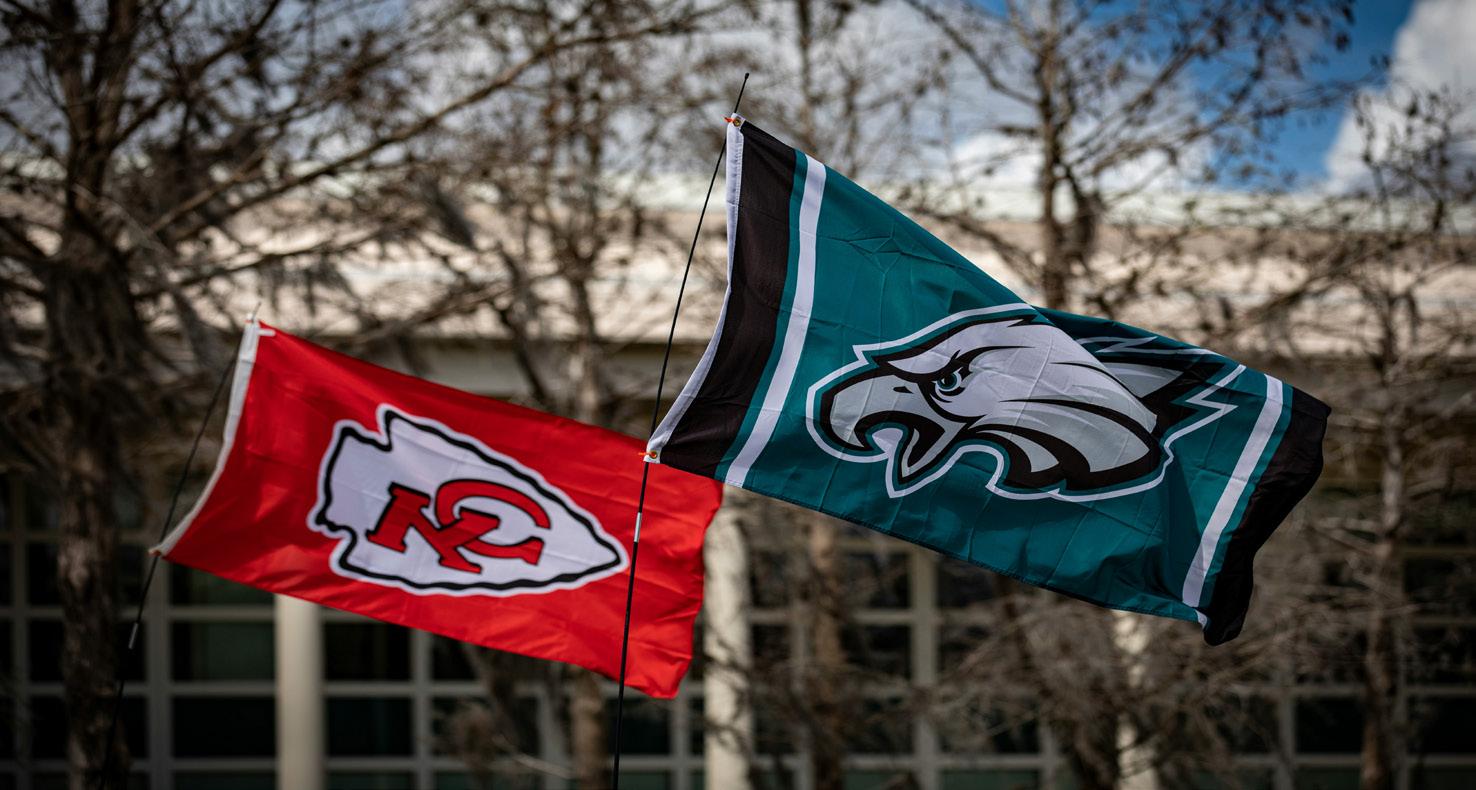
struggles in protecting Mahomes, which had been a recurring issue all season, were fully exposed as Philadelphia’s defensive front registered six sacks and forced three turnovers, each of which the Eagles turned into points.
“We had issues with turnovers, penalties, and execution,” Mahomes admitted to the media after the game.
Philadelphia was successful all postseason when it came to the turnover battle, as they forced 13 turnovers within their four games and only gave up one themselves. That is a recipe that
will guarantee winning games.
While Mahomes threw no interceptions in their first Super Bowl match in 2023, his two interceptions in this game seemingly took away the Chiefs’ chances of winning.
“The Chiefs’ offensive line has had a really difficult time protecting Mahomes all year, and the Eagles’ defensive line exploited that,” said Riordan History teacher and avid Chiefs fan Cory Nelson. “They forced three turnovers, and the Eagles took advantage of them. Hats off to the Eagles and Jalen Hurts.
I was proud of the Chiefs’ defense for stopping Saquon Barkley and that the Chiefs didn’t give up even until the very end.” Philadelphia wide receiver DeVonta Smith added to the Chiefs’ misery with a highlightreel 46-yard touchdown grab in the third quarter, pushing the Eagles’ lead to 34-0. Kansas City, known for its late-game heroics, attempted a comeback with Mahomes finding rookie Xavier Worthy for a 24-yard touchdown. But despite their resilience, the deficit still seemed insurmountable.
Despite the lopsided score, Mahomes and the Chiefs refused to back down, showcasing the resilience that had defended their dynasty in previous years. Wide receivers Deandre Hopkins and Xavier Worthy both caught touchdown passes late in the fourth quarter, but the Eagles’ cushion was too large to overcome. As confetti rained down and the Eagles hoisted the Lombardi Trophy, it was clear that this victory was built on dominance in the trenches, opportunistic play, and the leadership of Jalen Hurts. Philadelphia, once again, stands atop the NFL as champions.
By Hoorain Farooq ’25
As the 2024-2025 girls basketball season approaches its end, the Archbishop Riordan varsity team proved themselves as a team not to be underestimated.
Ranked 3rd in the WCAL, with an impressive overall record of 16 wins and only 7 losses, the Crusaders have made great progress in their second year as part of the WCAL. With guidance from Head Coach Will Watkins and new coaches, the team has embraced challenges and brought on a competitive fight.
Maxine Sutisna ’25 reflected on the team’s growth, “Since the start of the season. We’ve really come together. Even though we started off with some differences, we’ve built great chemistry together.”
Sutisna also commented on how being a part of the league has pushed the girls to work even harder. “This year has been more
competitive. Every game has been intense and we’ve stepped up to each challenge.”
The Crusaders have battled against some of the top teams in the state, proving their hard work and competitiveness against teams like Archbishop Mitty.
The girls started off this season strong with three promising wins in San Diego during the preseason. During their time in San Diego, the Crusaders beat C.K. McClatchy, one of the top ranked teams in Northern California, in overtime.
As the season moves into the CCS playoffs, the team hopes to make it to the State Championships. Last week, they defeated SI 49-45.
With a strong season behind them and a continuous build in motivation, the girls basketball team is sure to leave a lasting mark in this year’s season.
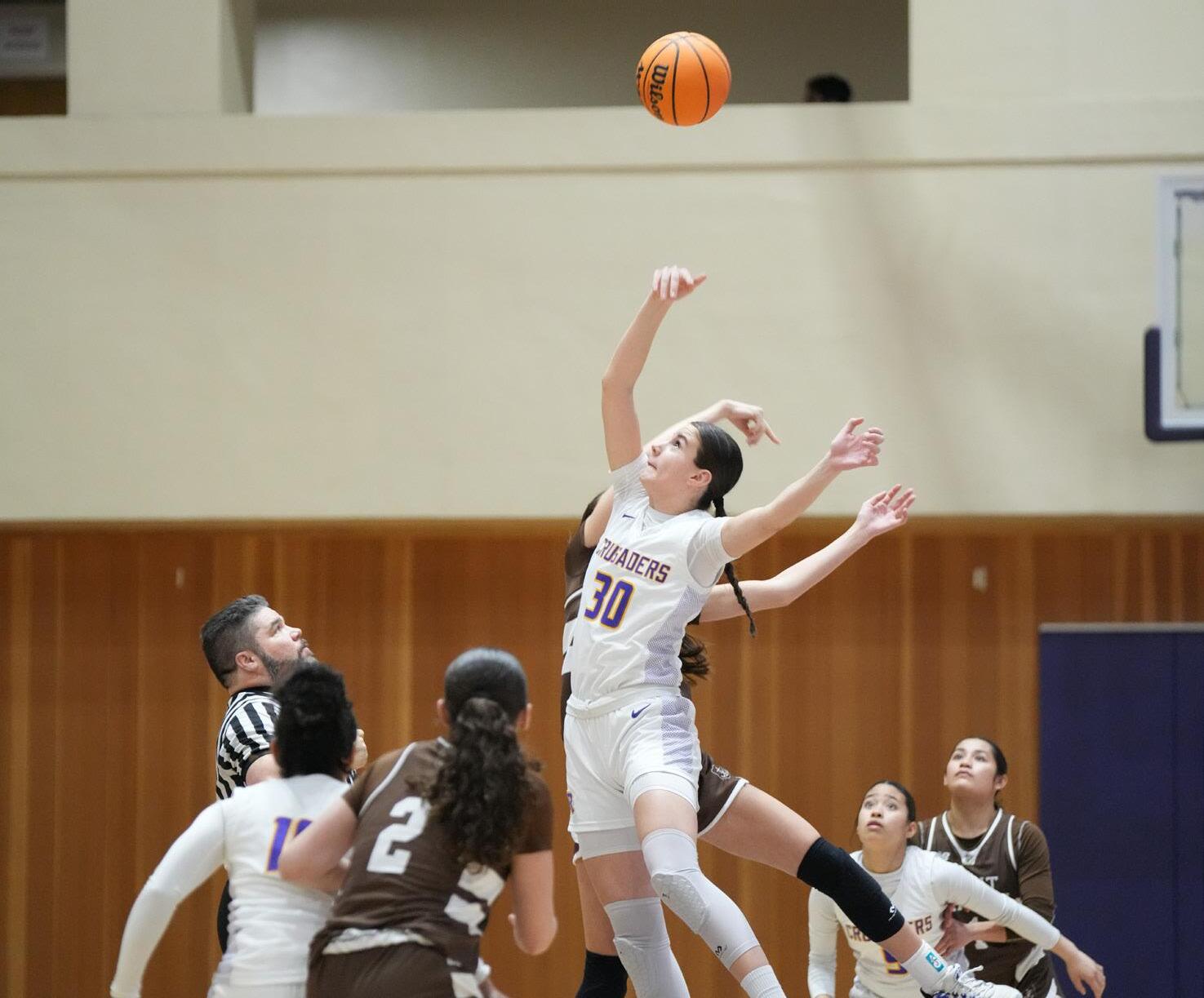
By Loghan Hwang ’27
Riordan varsity sailing is back at it again, charting a course for success. Sailing made it to the City Championships this year, which occurred on Jan. 11. They placed 8th out of 11 teams putting up a fight against big teams like Saint Ignatius and The Bay School.
“It was a challenging and windy day, and we’re proud of Riordan’s performance,” said Coach Maddy Kuhn.
The sailing season is long, taking up most of the year with regattas. The team works hard practicing twice a week at the St. Francis Yacht Club. Leading the team are Head Coach Brent and coaches Parker and Maddy.
This year’s team was made up of mainly returning sailors, so they were able to build up from the work they had put in last year. The team consists of Jai Walthew ’27, Nolan Balocki ’27, Kaia Burris ’27, Paige Walsh ’27, Elizabeth Walsh ’26, and team captain Eva Bennett ’25.
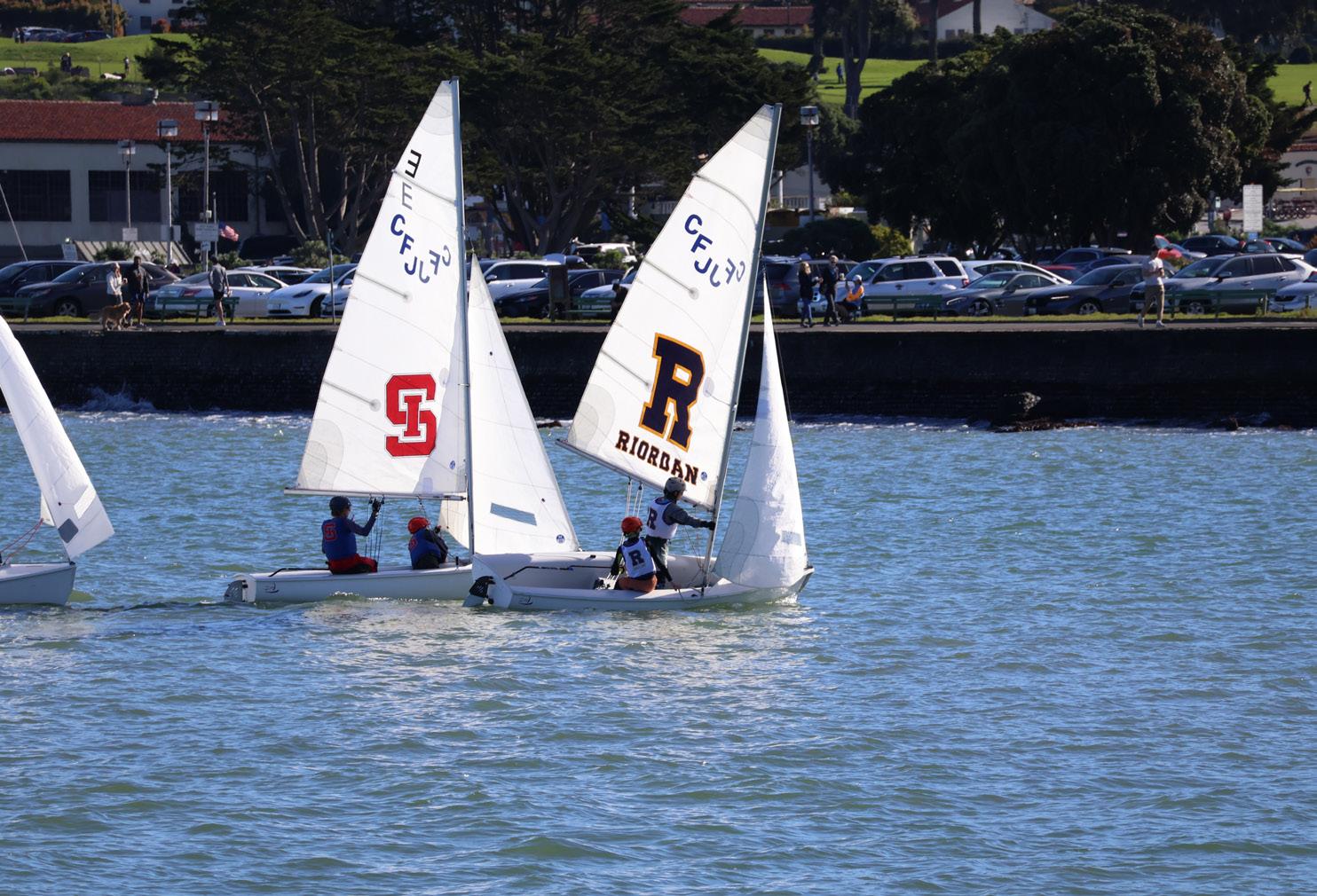
Walthew ’27 fight neck and neck with St. Ignatius down the course at the city championship regatta in the San Francisco Bay.
Eva Bennett ’25 said, “I think the team has a lot of potential.
It’s challenging when we are part of such a competitive club of 60
private high school sailors from SF schools that has such a strict limit of how many people can sail every year, but we’ve built a
strong foundation. As long as the sailors continue to support each other and put in the work, the team will keep improving.”
This year’s team captain Eva Bennett ’25 is passing down the torch to her fellow teammates, leaving words of wisdom behind. Bennett joined the team when Riordan first turned coed as the first girl on the team, where sailing soon became a large part of her high school experience, so it is not going to be easy to let go.
“When I first joined, I was just learning how to race and the team was so small we weren’t sure how long it would last. Now, we have a group of committed sailors, twice the size compared to when I started,” said Bennett.
Sailing has a bright future and even though they have some room to grow, the team is getting better exponentially. They cannot wait to see what the future holds.
By Genevieve Kohlmyer ’25
The Riordan girls soccer season drew to a close with an exciting senior night win against Drew. The match was a strong home win of 5-1.
This game was not just a normal game, but a heartfelt way to send off the seniors. The senior girls were ecstatic to end the season strong.
Co-captain Ava Bowles ’25 said, “Winning our senior night was a fantastic end to an amazing four years with this team. The stands were packed with roaring friends, family, and fans excited to watch our lady Crusaders end the season strong.”
The girls completed the season with a 5-4-2 record and are
improving every year. After Riordan started accepting girls in 2020, the women’s athletic department has been growing and improving every year, with this past year being one of the first to have senior girls who started as freshmen.
Along with many of Riordan’s women’s sports, girls soccer is not yet in the WCAL league, but they wish to compete in a more competitive atmosphere in the coming seasons.
Though many of the team’s players are graduating this year, the team is expected to continue to persevere and succeed.
Senior and co-captain Josie Espinoza-Schleicher ’25 said, “I

By Miles Witte ’27
Fancy passes, ankle-breaking dribble moves, and highlight reel dunks spotlight another blowout win for the explosive, high-octane Riordan’s Varsity Boys Basketball Team.
This year’s team feels a bit different with a record of 25-1 and a back-to-back undefeated season in WCAL play, going 14-0.
The motivating factor could be avenging last year’s heartbreaking loss in the CIF State Championship Semifinals, it could be a sense of urgency to win, it could be that several seniors are in their final season, or it could be their incredible level of teamwork.
Coach Joey Curtin ’01 said, “The day to day goal is to improve as a team.” He added, “Games are an opportunity for us to showcase what we’ve learned and how we’ve grown as a team.”
Furthermore, Varsity player Kirby Seals ’25 said that to build team chemistry, “We hang out outside of practice, we take tournament trips, and we have team meals before every game because families eat together.”
But with this renewed team chemistry, the end goal remains.
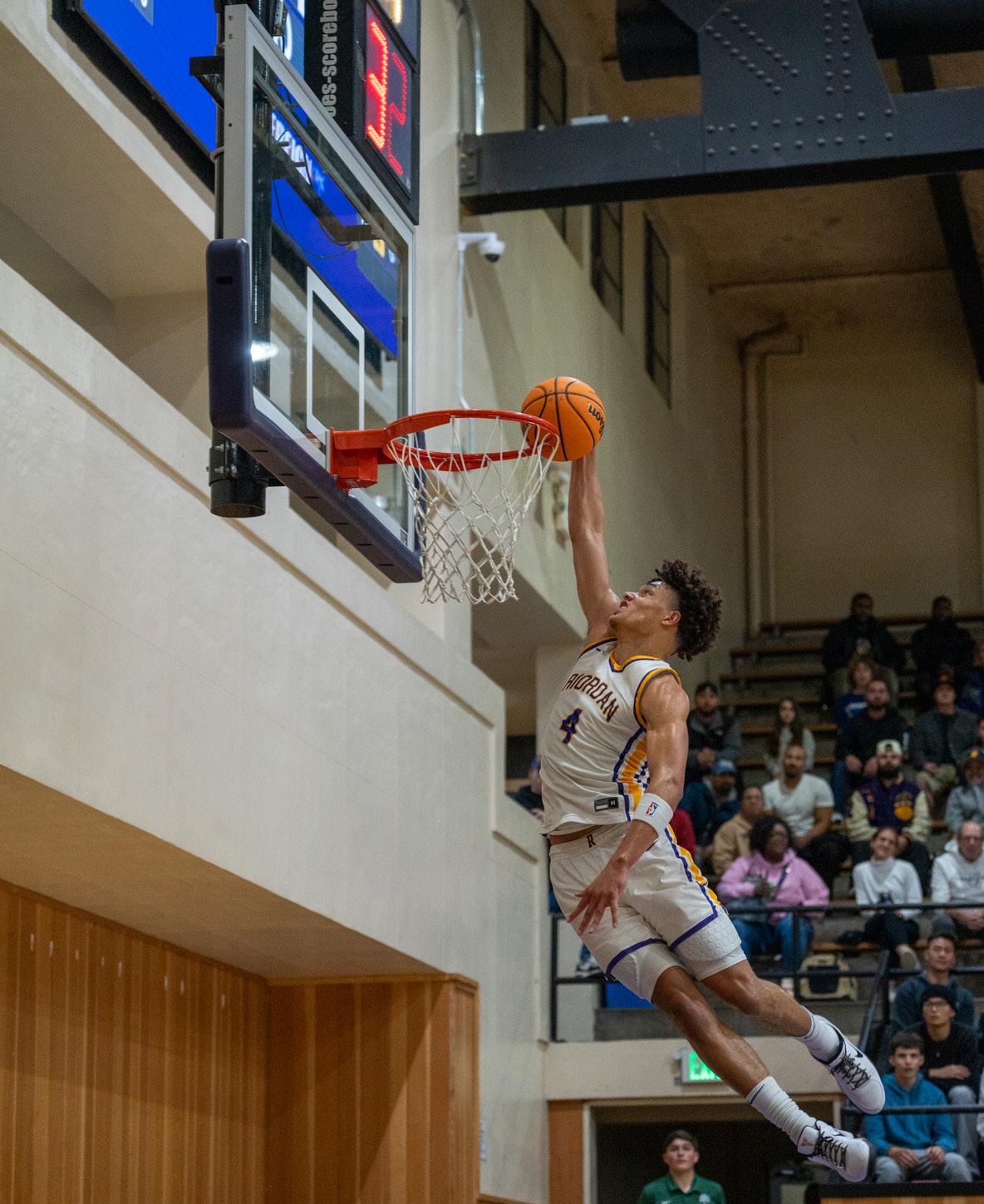
Coach Curtin said, “The ultimate goal is to win a state championship.”
Players Andrew Hilman ’26 and Seals both reaffirmed this statement.
With these high aspirations comes an elevated level of pressure and criticism for even the slightest mistakes.
To respond to both the critics and the pressure, Curtin said, “No one has higher expectations for the team than ourselves. Anyone who isn’t in the building, their opinion doesn’t matter. I really try to emphasize high expectations and we don’t need other people’s opinions.”
In addition to a strong team chemistry and a rock solid mentality, the team has also cultivated an atmosphere of intense competition in practice.
Hilman ’26 said, “We compete with each other and that makes us all better players.”
Incorporating all of these aspects has certainly translated into a blazing hot start for the Crusaders. With their sights set on state, and several wins in their pocket already, it is an exciting time to be a Riordan boys basketball fan.
By Luca Hvratin ’25
Riordan’s Varsity soccer team’s 2024-2025 season has been a learning experience, as the program continues to fight through one of the highest ranked and most challenging divisions in the state: the WCAL.
The team practices every day, along with film review in order to be at their peak abilities for their games every Wednesday and Saturday. The program is also about to go through a massive change, as the large class of seniors is undertaking their final season after reinvigorating the program with one of their best season records since 1978, over 45 years ago, finishing at 4-15-1.
Dominic Jarrous ’26 has looked back fondly on the year, saying that “it has been a memorable year, especially with all my friends who are graduating.”
With their senior day match
on Feb. 19 against Sacred Heart Cathedral, the program turned to its current juniors for leadership: Jarrous, Braxton Nemes ’26, and Phineas Kim ’26.
Kim is “excited to see the growth of the soccer program because of the rising sophomores, juniors and seniors.” Despite losing many starters and key parts of the lineup, the program continues to grow and advance with new players filling their roles.
Despite the challenging season, there are still signs of success and growth. Nemes looked back at the team’s growth as they tied Archbishop Mitty during their second match, after being defeated the first time weeks before, saying that “our performances against Archbishop Mitty at the start of the year to the end of the year were very encouraging and a good way to see the teams growth throughout the season.”

In past years, the second half of the season has always been when the Riordan team has come together and had success. This draw against Archbishop Mitty
as well as their victory against Valley Christian show that the squad is coming together. They hope to continue to carry this momentum into next season.
By Ishaan Gupta ’26
Wrestling, a sport dominated by takedowns, grapples, and pins, features a dynamic experience. Riordan’s 2024-2025 boys and girls varsity teams experienced lots of success this year with four wrestlers making the CCS Masters Qualifier: Freddie Michalchuk ’26, Georgie Michalchuk ’26, Lucas Valdez ’27, and Aaron Peakes ’25. On Feb. 22, Georgie and Freddie
qualified for state.
Freddie said, “I’m super proud of the team this year. We faced an obscene amount of injuries this season, but the commitment my teammates had to the sport and to each other was awesome.”
After training since the start of the year and going through multiple matches, the wrestling team has proved their readiness.
Georgie said, “My favorite
moment was qualifying for state for the first time with my twin, Freddie. This is my third year wrestling and seeing all the work I’ve put in pay off in such a concrete way was one of most rewarding moments of my wrestling career.
With their sights set on a WCAL championship, and with multiple wins, the team has a bright future ahead.
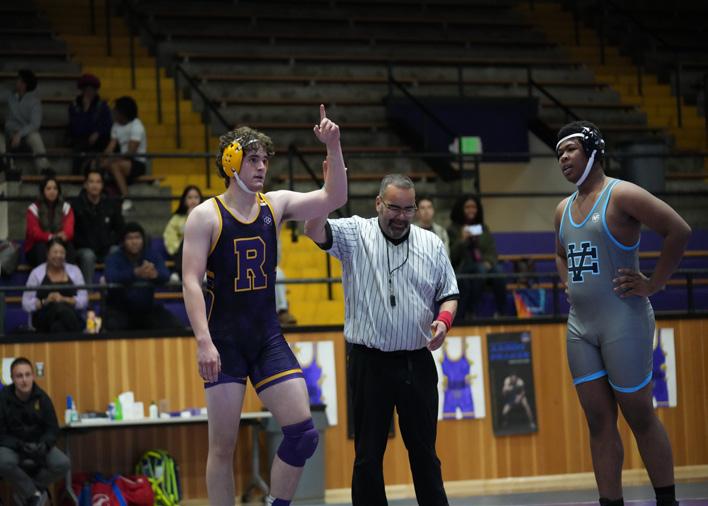

It was 1 a.m. on a Sunday night/Monday morning, and my last meal was seven hours ago. I was starving. However, I was too tired to cook and it was far too late for takeout. I stood in the kitchen for a solid minute, trying to decide if I should just thug it out and go to bed, when I suddenly remembered the frozen crab cakes that my mom bought a month ago.
Philip’s Maryland-style Crab Cake Minis, procured a la Costco, had the flavor and calories to adequately satisfy my hunger in the wee hours of the night.
The first thing I noticed about the crab cakes was that the crab meat was very loosely packed together–some of the mini cakes fell apart as I plated them. This did make it a little difficult to eat, especially when I tried to dip it in the knock-off tartar sauce that I
made to go with it, but it was not a big deal. I actually quite enjoyed the flavor. Sometimes frozen seafood comes with an off putting taste, but I did not find that to be the case here. It was savory, with a hint of herbs, and went along well with the sauce. The texture was also light and nigh-fluffy. Cooking it in the air fryer made some of the edges a little crispy, which I also enjoyed.
Overall, eating the Philip’s Maryland-style Crab Cake Minis was a pleasant experience that I would not be opposed to repeating. Though the structural integrity of the crab cakes was weak at best, they made a quick and satisfactory midnight meal. Given the savory-ness of the cakes, I would recommend eating it with a light salad. My ranking: 7/10; I would eat it again.
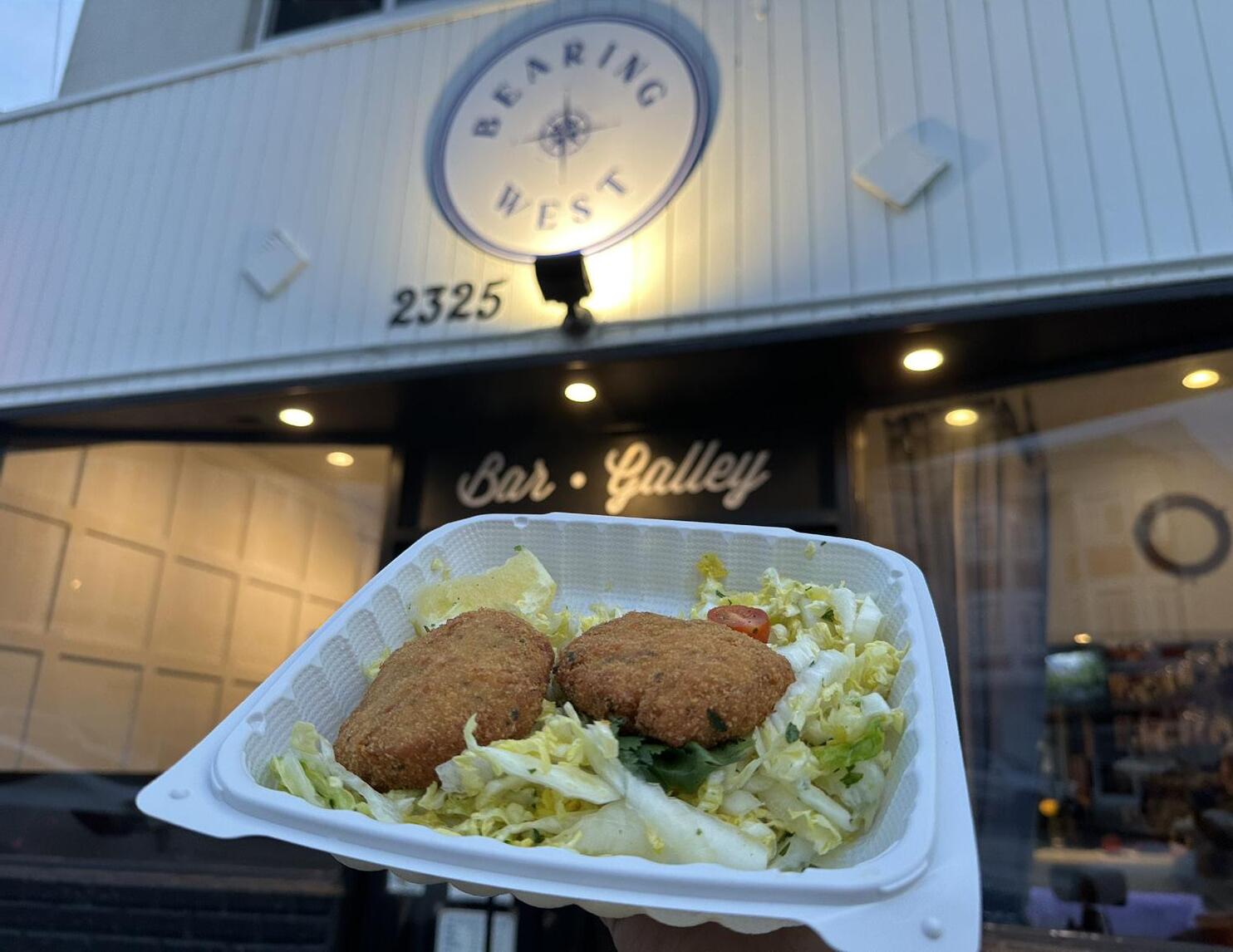
Review and photo by Loghan Hwang ’27
On this particularly gloomy day, the sun hides behind the comfort of the clouds. Tears of the sky poured down upon the earth creating a vast wetland. Not the most ideal day to visit San Francisco’s Iconic Pier 39. Soaked docks were cluttered with sea lions barking loud and proud.
Held up by sleek reddish brown wooden pillars is a Pier Market Seafood restaurant. Inside only a sprinkle of people sat and dined, probably because it was 11:30 a.m. on a very rainy day. Hawaiian-style music played in the background–not too fitting for the weather.
I ordered the crab cake appetizer, claimed as their house specialty, which came with two crab cakes and their house cajun rémoulade otherwise known as a fancy tartar sauce.
The cakes came relatively fast which was a plus but, what came
Pier Market Seafood Restaurant Pier 39, San Francisco, CA
next was not as great.
Each cake seemed to be only a quarter of an inch thick which led to my disappointment. Steam spewed out of the crab cake as I cut one open to take a nibble.
Upon the first bite, the flavor of the crab was nowhere to be found. This puzzled me because it was in fact crab season when the crabs should be sweet and fluffy.
Though the crab cakes were quite crispy, the only flavor to be found was breading and parsley.
Dipping the cakes into the rémoulade only made it a slightly better experience, making it taste more like fried bread crumbs and a zing of tartar sauce.
Overall, this experience greatly disappointed me. The two crab cakes totaled $18.95 with the added audacity to call it their house specialty.
I would personally not recommend this dish or order again.

When people think of seafood in San Francisco, Fisherman’s Wharf is usually the first place that comes to mind, but sometimes the best food can be found where you least expect it.
In San Francisco’s Sunset District, there is a seafood restaurant called Bearing West located on 2325 Taraval St. The restaurant had a charming interior and exterior, though unfortunately I did not get the chance to dine inside. Instead, I ordered take out.
When looking through the extensive menu, I landed on a classic: crab cakes. The order only took about 15 minutes, and came in a plastic white take out box within a brown paper bag. As I opened the white box, I noticed that the smell of the meal wasn’t
CA
particularly strong, which slightly lowered my expectations for the taste. But, I was pleasantly surprised when I bit into the cake. The crisp but soft outer shell allowed my teeth to pass through with ease, and as soon as I started chewing, my mouth was blanketed with warmth and a subtle but firm taste of shellfish presented in a stringy texture. The cake was mostly crispy, and the bottom got a little soggy from the salad it was served on, but it didn’t take away from the taste.
Before I knew it, I had finished both of the cakes served to me. Having just come back from baseball practice, these crab cakes hit the spot and had me feeling refreshed and nourished after a long day.